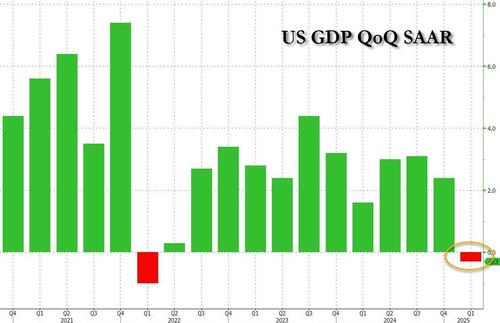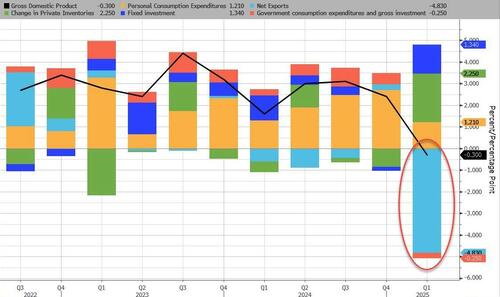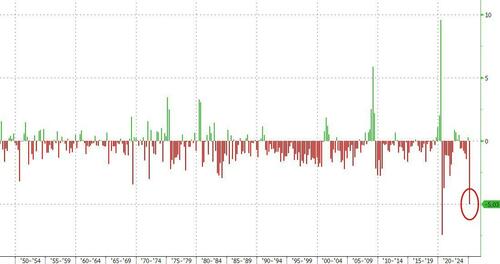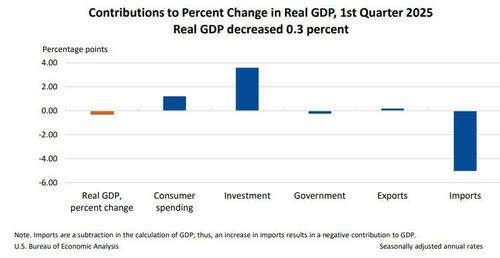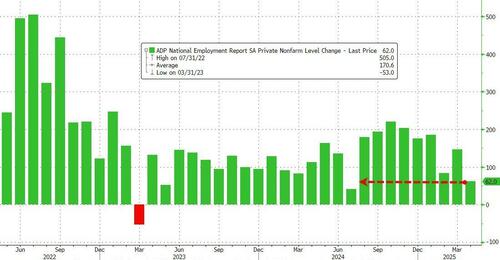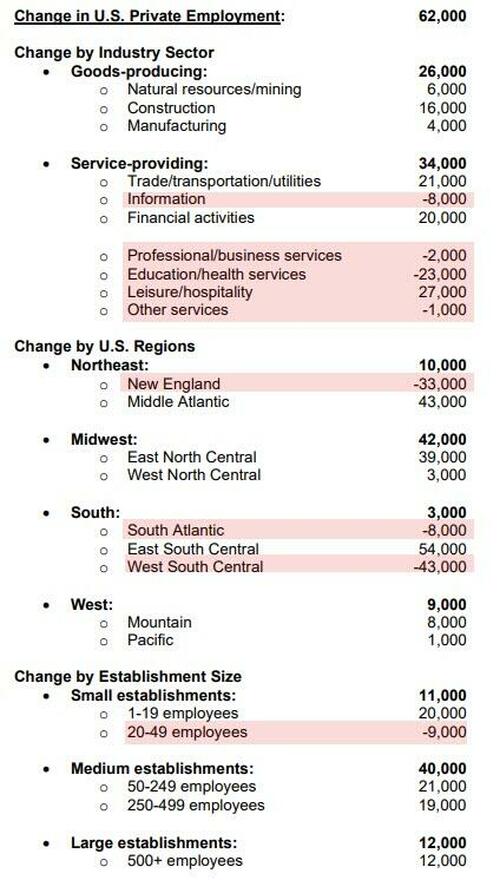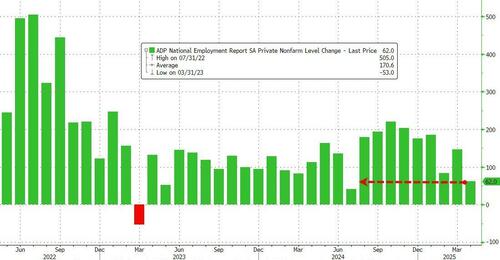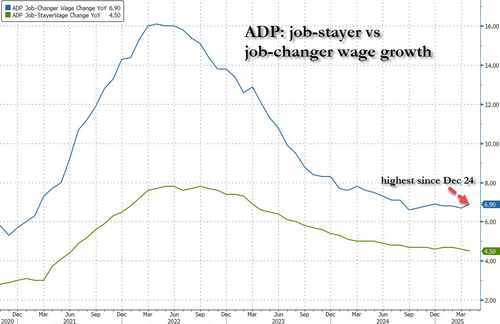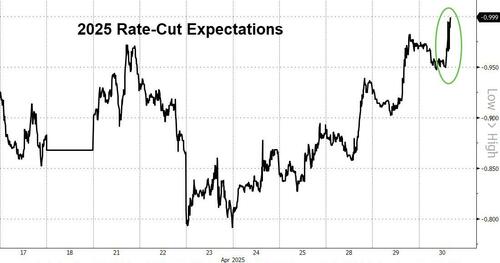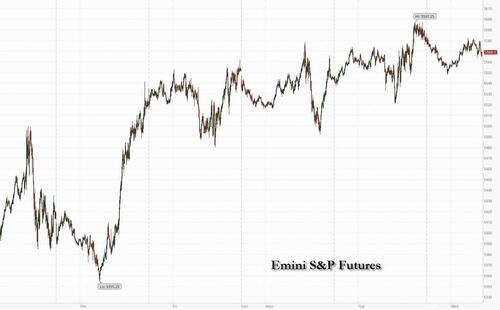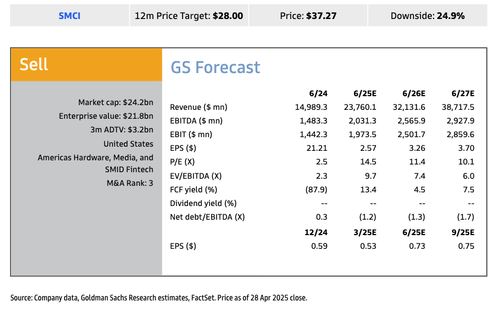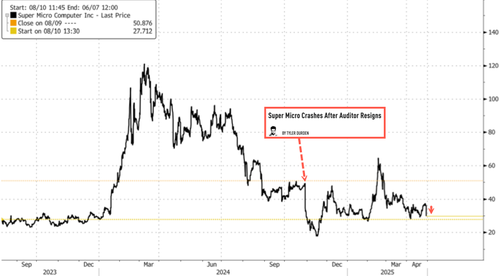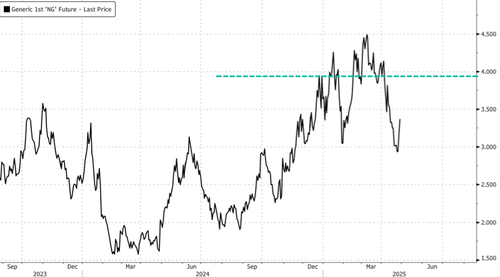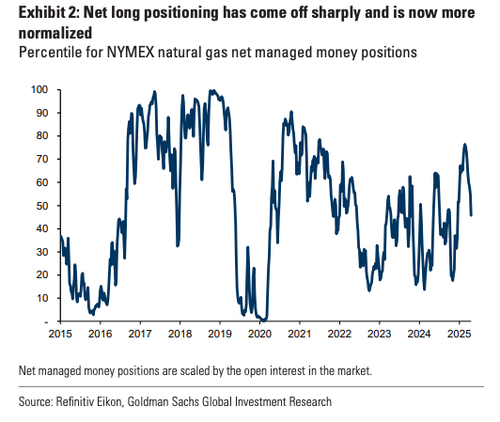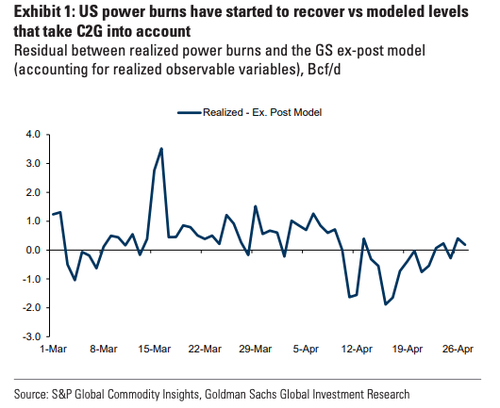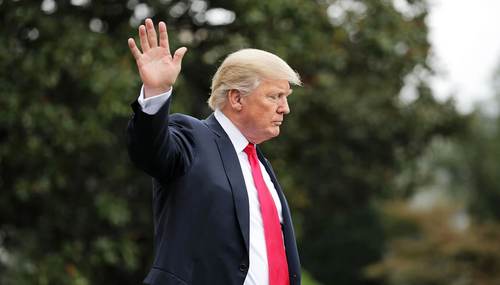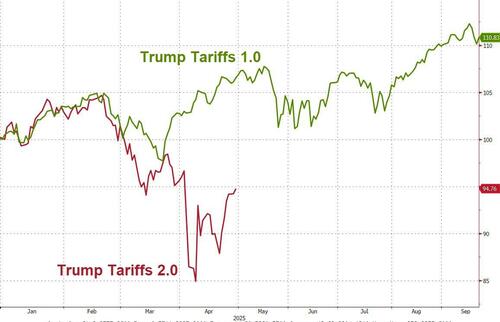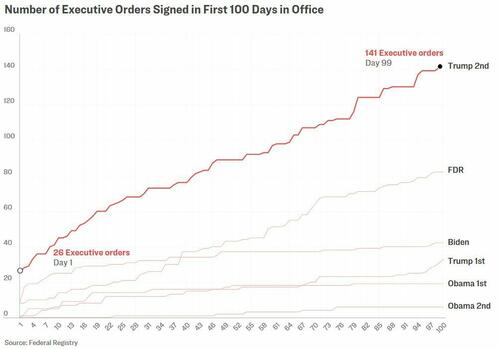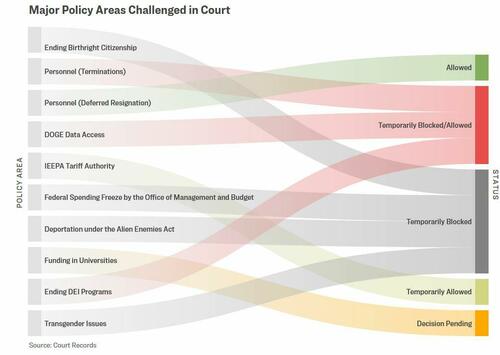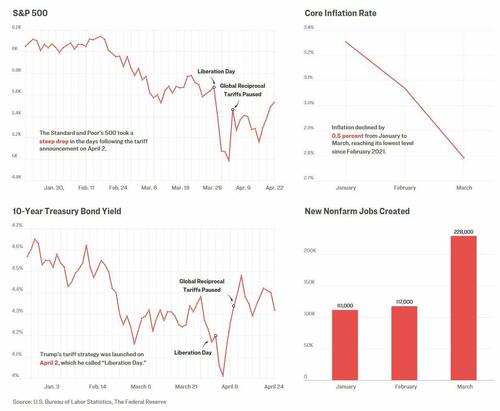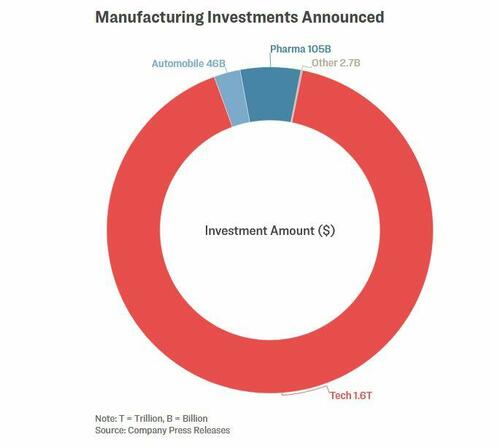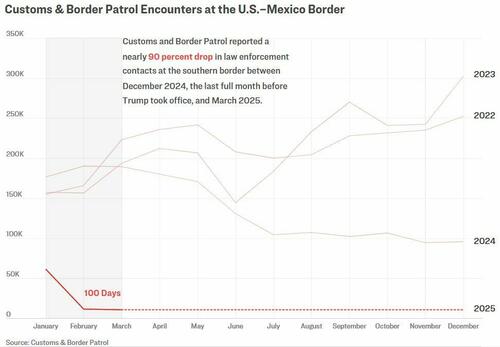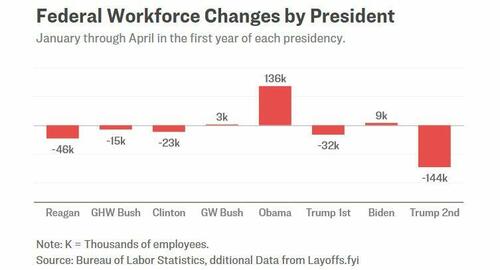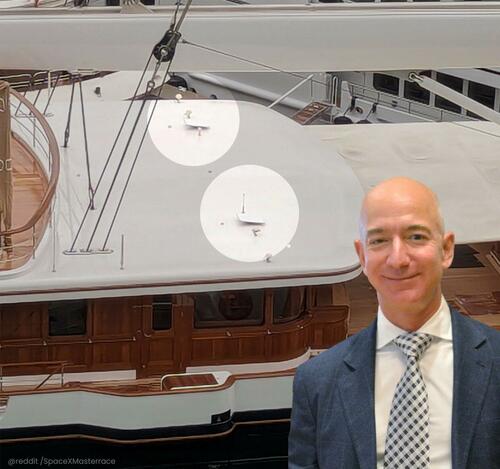Celibacy is always, shall we say, an affront to what man normally thinks. It is something that can be done, and is only credible, if there is a God and if celibacy is my doorway into the kingdom of God.
Distinction Matter - Subscribed Feeds
-
Site: Ron Paul Institute - Featured Articles
(photo: The erstwhile USS Harry S. Truman (CVN-75), now dubbed the USS Trembling Puppy for its multiple episodes of fleeing Yemeni missile strikes in a panic.)
In the aftermath of the USS Trembling Puppy acknowledging the loss of yet another fighter aircraft in the midst of a Yemeni missile attack, many speculations have arisen regarding what actually happened.
The “official” story is that an F/A-18 and its tow tractor were flung overboard while performing “evasive maneuvers” in the face of oncoming Yemeni anti-ship cruise missiles.
Many are skeptical of the “official” story of the jet going overboard as a result of an evasive maneuver.
Some think a US carrier would not even attempt an “evasive maneuver” to elude a cruise missile. But US carriers are trained on such maneuvers, even though I suspect they have limited potential efficacy.
Some think the Yemeni may have used loitering drones to shoot down an F/A-18 on landing approach to the carrier. This is an interesting conjecture, and while I do not dismiss it outright, I consider it less likely than the “official story”.

F/A-18 on approach for a carrier landing.
Let’s first consider the anti-ship cruise missiles, which are either Iranian “hand-me-downs”, or at least based on legacy Iranian designs, with a range up to 2000 km, a speed of ~.7 Mach, and a ~250 kg warhead.

Iranian Soumar ground-launched Cruise Missile, believed to be the design-basis for Yemeni ground-launched cruise missiles.
From a launch point in Yemen, it would require over an hour of flight time to travel the 1000+ km distance to the carrier strike group in the northern Red Sea.

Map of the Battle of the Red Sea — 2025
It must be assumed that US surveillance assets are able to track such missile launches along their entire path, and so CSG-8 should have been continuously apprised of the position of the various components of the strike package.
In other words, Rear Adm. Sean R. Bailey, commander of Carrier Strike Group Eight, and Captain Christopher “Chowdah” Hill, commander of the USS Harry S. Truman (CVN-75), both should have had real-time intelligence at every moment for 4+ hours of drone flight time, and over an hour of cruise missile flight time.
That said, the MQ-9 Reaper drone is one of the integral components of US persistent surveillance capability — and as has been widely reported, the Yemeni have now shot down 22 of them, several in the last month alone. So it is altogether possible that US surveillance of these missile launches could be meaningfully impaired.

Yemeni soldier celebrating the downing of yet another MQ-9 Reaper drone.
At any rate, I figure the Yemeni are firing cruise missiles which, at best, have about a 250m circular error probability at a distance of 1000+ km. Even a salvo of a dozen would struggle to score a hit on a moving ship 1000 km away — and the Yemeni have typically only fired 2 or 3 in any given salvo.
But apparently at least one got through the perimeter air defenses and the combat air patrol on this particular occasion, and was on a threatening track towards the Trembling Puppy.
Therefore Captain Soggy Cookie veered in a panic, dumping an F/A-18 and its tow tractor into the sea, and splashing salty seawater into the still-open wound of the Trembling Puppy’s February 2025 collision with a cargo ship just north of the Suez Canal.

Captain Soggy Cookie, formerly of the USS Brave Sir Robin (CVN-69), now commanding the USS Trembling Puppy (CVN-75).

USS Trembling Puppy Collision Hull Damage

USS Trembling Puppy Collision Hull Damage
Anyway, no matter the as-yet-uncertain details, it’s clearly another indisputable embarrassment for the US Navy, which has sought in vain for a year and a half to break the Yemeni selective blockade of the Red Sea.
With the recent addition of the USS Timid Vinny (CVN-70), which is cowering somewhere in the calm blue waters of the northern Arabian Sea, the Yemeni have now put the fear of Allah into five separate US Navy carrier strike groups over the course of the past eighteen months.
Alas, as I have long observed, there are no easy wars left to fight.
In any case, this simple fact remains: against all odds and prior expectations, the chronically underestimated Yemeni remain the gatekeepers of the Bab-el-Mandeb, and are inflicting upon the United States Navy one of the most decisive strategic defeats in its heavily mythologized history.
Reprinted with permission from imetatronink.
Subscribe and support here. -
Site: Zero HedgeUS Q1 GDP Contracts On Record Imports, Shrinking Govt, As Consumption Comes In Stronger Than ExpectedTyler Durden Wed, 04/30/2025 - 09:04
There were good and bad news in today's GDP report.
Starting with the bad news, Q1 GDP printed -0.3%, worse than the -0.2% expected and the first negative print since Q1 2022 when the economy was in a recession but was subsequently revised out of it
The good news is that the drop was actually supposed to be much worse (recall the Atlanta Fed's latest GDP estimate was -2.7%, or -1.5% excluding record gold imports). Indeed, if one looks at the components of today's GDP print one finds that the number was actually unexpectedly strong, if one strips out the two negative components, net trade and government.
As shown in the chart below, Q1 GDP comprised of the following components:
- Personal Consumption 1.21%, down from 2.70%, but translating into an annualized Personal Consumption print of 1.8%, much higher than the 1.2% expected
- Fixed investment jumped to 1.34%, up from -0.2% and the highest since Q2 2023 as the BEA finally starts tracking data center investment correctly
- Change in private inventories surged 2.25%, as expected, on the pre-tariff restocking; this number was up from a -0.84% drop last quarter and is expected to reverse in coming quarters as inventories are sold off.
- Government spending was a negative -0.25%, the first negative print for Joe Biden's favorite "plug" to push GDP higher since 2022.
- Finally, and most importantly, net trade (exports less imports) was a whopping 4.830% hit to the final GDP number, a 5% swing from the +0.26% contribution in Q4. This was entirely the result of soaring imports (of which gold was about half) in Q1 which hit GDP by a near record 5.03%. Just like inventories, this number will now reverse in coming quarters as tariff frontrunning ends and is reversed.
And visually:
Taking a closer look at the import contribution to GDP, which was the biggest swing factor, one can see that at 5.03%, this was the 2nd highest on record with just the outlier covid shock bigger. In other words, absent economic shock, this was a record quarterly print.
In its commentary, the BEA confirmed as much, writing that "the decrease in real GDP in the first quarter primarily reflected an increase in imports, which are a subtraction in the calculation of GDP, and a decrease in government spending. These movements were partly offset by increases in investment, consumer spending, and exports."
Compared to the fourth quarter, the downturn in real GDP in the first quarter reflected an upturn in imports, a deceleration in consumer spending, and a downturn in government spending that were partly offset by upturns in investment and exports.
Turning to inflation, the BEA reported that the price index for gross domestic purchases increased 3.4 percent in the first quarter, compared with an increase of 2.2 percent in the fourth quarter. The personal consumption expenditures (PCE) price index increased 3.6 percent, compared with an increase of 2.4 percent. Excluding food and energy prices, the PCE price index increased 3.5 percent, compared with an increase of 2.6 percent.
Putting these in context, GDP Price index of 3.7% came in hotter than the 3.1% expected, while the core PCE of 3.5% was also hotter than the 3.1%.
Bottom line, the GDP number was much stronger than expected, in fact it was a whopping 2.4% higher than the now laughable AtlantaFed GDP forecast, and if anything this positions the Trump admin for a surprise bounce in Q2 and/or Q3 when all the outlier prints from Q1 are reversed.
-
Site: Mises InstituteEven if this global trade war is ended tomorrow, it will take a minimum of 30 to 55 days, but more likely at 7-9 months, to normalize supply chains.
-
Site: Mundabor's blogWe just had another example of the real nature of these Hollywood “stars”. They are total wrecks. They are complete and utter failures. They are virtue-signalling freak shows, living a life of drama, narcissism, and arrogance. Completely unable to be of any use in what is most important to someone who marries and has children, […]
-
Site: AsiaNews.itA US air raid against a detention centre last Sunday killed at least 68 people from Africa. Since mid-March, US and UK planes hit at least a thousand targets. Advocacy groups report at least 400 civilians killed. Pope Francis is among the few voices who spoke out against the tragedy of migrants in the region.
-
Site: LifeNews
The ACLJ just filed a federal lawsuit to defend a courageous pro-life advocate whose constitutional rights were blatantly violated by local officials in Carbondale, Illinois. We told you earlier this month that while we were live on air during our broadcast, a pastor reached out to us after some of his parishioners were being targeted for criminal citation by police just for having pro-life signs. We went right to work, in real-time, de-escalating the police and ensuring that our clients were not arrested that day.
We quickly followed up with a demand letter to the city attorney, which has been completely ignored. That is why we have now filed a federal lawsuit to protect the constitutional rights of Brandon – a sidewalk counselor who believes his mission field is to proclaim the Gospel and minister to women in crisis pregnancies – who was threatened with a citation and possible arrest for having pro-life signs on public property outside of an abortion clinic.
Please follow LifeNews.com on Gab for the latest pro-life news and info, free from social media censorship.
As our readers may recall, on April 16, our client, a missionary and founder of a pro-life sidewalk counseling ministry, was peacefully advocating for life outside an abortion clinic in Carbondale. He was joined by other pro-life advocates. They carried small yard signs offering free baby supplies and life-affirming messages such as “We will adopt your baby” and “Love your preborn neighbor as yourself.”
That’s when the trouble began.
A city official, acting on direct orders from the city attorney, told Brandon that all signs – even those placed well beyond the 20-foot setback as required by the ordinance – were prohibited, despite the ordinance’s language that it is not intended to limit “demonstrations” or other “political rallies.” Brandon was informed that unless he removed the signs immediately, the police would be called, and he could face a citation and the confiscation of his property. When Brandon asserted that he had the right to demonstrate against abortion under the First Amendment, the city’s representative flippantly told him, “No, you don’t.”
Brandon attempted to comply with every shifting explanation the officials gave him, even retrieving new signs that were purely demonstrative and devoid of any offer of free goods or services. Still, the city official – on order from the city attorney – insisted that no signs were allowed, period.
Police officers were called in. Threats of citation and criminal charges followed. Brandon’s pastor called us for help, and we intervened immediately on behalf of our client and prevented an arrest or citation from being issued.
Even when reviewing the ordinance the following day, Brandon thought that there might be an exception to what he was told by city officials and that a 501(c)3 organization, like his ministry, could apply for a permit to post temporary signs. When he went to obtain this permit, he was told that a permitting process didn’t exist and there was no permit he could apply for to temporarily post anti-abortion signs. This was explicitly in contradiction to the city ordinance.
The ACLJ intervened swiftly, sending a formal demand letter to the city of Carbondale on April 22. We made it clear that Brandon’s speech was constitutionally protected, the city’s ordinance was unconstitutionally vague and chilled First Amendment speech when applied, and the city’s treatment of our client amounted to viewpoint discrimination. We demanded written assurances that his rights would be respected and that he would be allowed to obtain a permit under the ordinance’s own terms – just as any 501(c)(3) nonprofit is allowed to do.
The city failed to respond.
Their silence speaks volumes. Carbondale’s officials have effectively adopted an unwritten policy: Pro-life voices are not welcome in public spaces.
So the ACLJ has filed a federal lawsuit against the city of Carbondale, the city attorney, and the city’s community development manager. This case seeks to vindicate Brandon’s rights under the Constitution and Illinois law.
We argue that the city’s ordinance is unconstitutionally vague and arbitrarily enforced. Worse still, the city is applying the law in a discriminatory fashion to silence religious and pro-life speech. Brandon wasn’t just threatened with enforcement – he was outright denied the ability to even apply for a permit that the ordinance specifically allows for nonprofits like his. This is a textbook case of unconstitutional viewpoint discrimination, enforcing a policy in one way for some people and another way for others.
We are seeking declaratory and injunctive relief to stop Carbondale from continuing its unlawful behavior, along with compensatory damages and attorneys’ fees under federal civil rights statutes.
This is what the ACLJ was built for: to stand in defense of the Constitution and to ensure that no government can silence people of faith or punish them for their beliefs.
We will keep you updated as the case progresses. Your continued support is what makes this work possible. Stand with us as we fight for life and liberty in court.
LifeNews Note: Jordan Sekulow is the Executive Director of the American Center for Law and Justice (ACLJ).

The post Lawsuit Filed Against City Giving People Criminal Citations for Pro-Life Yard Signs appeared first on LifeNews.com.
-
Site: AsiaNews.itn Tajikistan, construction has just been completed on a special hangar for the luxurious presidential aircraft that Emomali Rakhmon purchased from Mexico, which could no longer afford the maintenance costs. This is the latest example of a widespread trend among heads of state throughout the region.
-
Site: Zero HedgeRate-Cut Odds Jump After ADP Reports Weakest Job Growth Since July 2024Tyler Durden Wed, 04/30/2025 - 08:24
While jobless claims refuse to show even a glimmer of hope to the doomsaying 'recession is imminent and it's all because of Trump' narrative, this morning's ADP gives us a potential glimpse at what Friday's 'most important payrolls print ever' will offer.
...and the picture is not pretty at all...
According to ADP, the US economy added just 62k jobs in April - the lowest since July 2024's dip
Source: Bloomberg
Education and health services, information, and professional and business services lost jobs, while hiring in other sectors was moderate.
"Unease is the word of the day," says Nela Richardson Chief Economist.
"ADP Employers are trying to reconcile policy and consumer uncertainty with a run of mostly positive economic data. It can be difficult to make hiring decisions in such an environment."
Goods-Producing jobs outperformed Service-Providing jobs...
There is more bad news -
Pay for job-stayers rose 4.5 percent in April from a year earlier, a slight deceleration from March.
Year-over-year pay gains for job-changers accelerated, rising from 6.7 percent in March to 6.9 percent in April - the highest since Dec 2024.
The market is moving that way - pricing in four cuts for 2025 now.
-
Site: Zero HedgeFutures Drop Ahead Of Macro Data, Earnings DelugeTyler Durden Wed, 04/30/2025 - 08:17
US equity futures slipped ahead of key GDP and PCE data. As of 8:00am, S&P 500 futures are down 0.3% while Nasdaq 100 contracts lose 0.5%, with Mag 7 names mostly lower (NVDA -1.4%, TSLA -1.1% and META -0.6%) as weak earnings weighed on risk sentiment after Super Micro plunged 16% ahead of Microsoft and Meta numbers later on Wednesday. Bond yields are lower by 1bps to 4.15% while the USD is higher. Overnight, China’s factory PMI slipped into the worst contraction since December 2023 (49 vs 49.7 cons) due to the negative impact of higher US tariffs, while Trump at a rally in Michigan renewed his criticism of Powell, noting he is "not really doing a good job" and that he knows more about interest rates. This morning, Euro Area flash CPI has been mixed, while Q1 GDP data was slightly firmer than expected at 1.2% YoY (vs 1.1% cons). Commodities are mixed: oil is 1.8% lower; previous metals are lower, while base metals are mostly higher. After yesterday’s close, earnings were modestly negative. Particularly, SBUX fell 6.7% on missed earnings amid margin pressure and top-line growth. BKNG commented that there is a moderation in inbound travel into the US, but so far the global leisure travel demand has been stable. Looking ahead today, we have ADP employment, Q1 GDP, PCE and employment cost index. There are no Fed speakers scheduled given blackout ahead of May's FOMC meeting.
In premarket trading the Mag7 stocks were mostly lower (Alphabet -0.1%, Amazon -0.6%, Apple -0.4%, Meta Platforms -0.9%, Microsoft +0.1%, Nvidia -2%, Tesla -1.3%). First Solar tumbled 12% after the maker of electricity-producing solar modules cut earnings guidance for this year due to tariffs imposed by the Trump administration. Norwegian Cruise Line dropped 7% after warning that cruise demand, which has long defied worrying travel trends, is beginning to weaken. Snap plunged 13% after the company declined to issue a sales forecast for the current period, saying it is navigating macroeconomic “headwinds” for its advertising business. Starbucks slumped 8% after weaker-than-expected results in the latest quarter amped up pressure for the company’s new management to deliver. Here are some other notable premarket movers:
- BridgeBio Pharma (BBIO) rallies 9% after the drugmaker reported sales of its recently approved heart drug, Attruby, that crushed expectations.
- Etsy (ETSY) rises 1% after the online marketplace for crafts reported revenue for the first quarter that beat the average analyst estimate.
- Freshworks Inc. (FRSH) climbs 9% after the software-as-a-service company boosted its profit and revenue outlook for the year.
- Garmin (GRMN) falls 6% after the maker of GPS-enabled products posted first-quarter results and provided a year forecast.
- Oddity Tech (ODD) jumps 17% after the direct-to-consumer beauty and wellness company boosted its net revenue guidance for the full year to a level above Wall Street expectations.
- Qorvo (QRVO) climbs 8% after the Apple supplier reported adjusted 4Q earnings that topped estimates.
- Regulus Therapeutics (RGLS) shares are halted after the company entered into an agreement to be acquired by Novartis AG.
- Seagate (STX) gains 7% after the computer hardware and storage company reported third-quarter earnings and revenue that beat the average analyst estimate
- Stride Inc. (LRN) climbs 3% after the online education company boosted its revenue forecast for the full year. Fiscal third-quarter revenue increased 18%.
- Super Micro Computer (SMCI) tumbles 16% after giving preliminary results that fell well short of analysts’ estimates, a sign its comeback plan has been slow to gain traction.
- Tenable (TENB) plunges 17% after the cybersecurity company cut its full-year guidance, with analysts noting lower visibility ahead for the stock due to US federal spending uncertainties.
- Wabash National (WNC) falls 13% after the semi-trailer manufacturing company cut its revenue guidance for the full year.
Investors have been cautiously optimistic, with the Nasdaq 100 close to erasing all of its losses this month, after tariff U-turns and speculation the Federal Reserve will cut interest rates to prevent a recession.
“Perhaps we are past peak uncertainty,” Kim Crawford, global rates portfolio manager at JPMorgan Asset Management, told Bloomberg TV. “The administration has a more conciliatory tone on tariffs and to an extent as well, Fed independence.” Benchmark 10-year Treasuries steadied after six days of gains, with the yield at 4.16%. Gold dropped.
Four of the so-called Magnificent Seven — Microsoft, Apple Inc., Meta and Amazon.com Inc. — are reporting earnings this week. Analysts expect the group — which also includes Google-parent Alphabet Inc., Tesla Inc. and Nvidia Corp. — to deliver an average of 15% profit growth in 2025, a forecast that’s barely budged since the start of March despite the flareup in trade tensions.
“Even if you take out the tariff story outcome I think there is an issue for Big Tech and the market will probably start to refocus on that when we get this earnings season,” Christopher Wood, global head of equity strategy at Jefferies, told Bloomberg TV. “We still have the issue of the massive amount of capex being spent on Big Tech, they’re overspending on this AI story.”
Economic barometers of US economic health are also due with inflation and GDP data Wednesday that will give a snapshot of activity just before President Donald Trump unleashed country-specific levies on April 2. US real GDP growth likely cooled to a standstill in the first quarter amid disruptions from policy shifts, according to Bloomberg Economics.
Veteran emerging-markets investor Mark Mobius said he’s keeping 95% of his funds’ holdings in cash as he waits out the trade-related uncertainty. Hedge funds are reluctant to make major bets amid the turmoil, with the only significant shift in positioning in April being increased bets against US stocks, Bloomberg reported.
In the latest pivot in Trump’s trade strategy, the US president signed an executive order easing the impact of his auto tariffs, preventing duties on foreign-made vehicles from stacking on top of other levies and lessening charges on parts from overseas used to make vehicles in the US. The news supported sentiment toward European auto stocks Wednesday, with Mercedes-Benz Group AG and Stellantis NV rising even after withdrawing their outlooks for this year, citing the uncertainty of trade barriers.
In a rally celebrating his first 100 days in office, Trump defended his tariff policies as he marked his 100th day in office. He also renewed criticism of Fed Chair Powell, saying he is “not really doing a good job.”
In Europe, the Stoxx 600 rises for a seventh consecutive session, albeit only slightly, as disappointing earnings keep a lid on gains. Travel & leisure stocks are the worst performers. Energy and bank stocks also underperform with notable declines in TotalEnergies and Credit Agricole after their respective updates. Here are some of the biggest movers on Wednesday:
- Societe Generale shares advanced 5.7% after the French lender beat estimates as equities trading hit a record and it booked a gain on disposals.
- DSV shares rise as much as 11% after the Danish logistics firm gave a reassuring set of results, with analysts highlighting the synergies it set out from its DB Schenker deal.
- Schindler shares gain as much as 8.2% after the Swiss elevator and escalator maker reported impressive 1Q results with a dynamic order intake and no change in guidance despite US tariffs.
- Stellantis shares rise as much as 4.2% in Milan after the carmaker released a trading update which Bernstein said included some positives, with pricing ahead of expectations in all key regions.
- VW shares rise as much as 1.4% after the German carmaker reiterated its full-year guidance, a move JPMorgan called a positive signal.
- Deutsche Post shares rise as much as 4.1% after the delivery firm’s Ebit came in higher than expected in the first quarter, driven by its Express and Post & Parcel divisions and aided by cost-cutting.
- Aixtron shares climb as much as 14% after the German chip-tool company’s first-quarter results showed better-than-expected revenue, order levels and positive free cash flow, according to Warburg.
- Remy shares rise as much as 5.7% as analysts highlighted encouraging signs in the Cognac maker’s earnings, including an improvement in its US market as well as a better outlook for 2026.
- UMG climbs as much as 7.1% as subscription growth helps to deliver first-quarter results above expectations.
- Befesa shares rise as much as 13% after the German recycling company’s full-year earnings guidance surprised to the upside.
- AMS-Osram shares soar 17%, with ZKB analysts saying the Swiss chipmaker reported a good start to the year due to strong performance in its semiconductor business.
- Credit Agricole fell as much as 4.5% as higher-than-expected costs and a tax bill weighed on profit.
- TotalEnergies shares fall as much as 4.3% after the French energy company reported results that were in line with expectations, but also an increase in net debt.
- Mercedes shares drop as much as 2.8% after the carmaker said tariff volatility is too high to give a reliable outlook.
- Evolution shares drop as much as 18%. The gambling operator reported a miss on revenue and Ebitda in the first quarter, which management attributes to actions including ring-fencing regulated markets in Europe and countermeasures to cyberattacks in Asia.
Earlier in the session, Asian stocks rose, on track for a fourth-straight day of gains, as investors were encouraged by a continued rally on Wall Street and optimism over potential trade deals with the US. The MSCI Asia Pacific Index gained as much as 0.7%. Sony was among the biggest boosts after Bloomberg reported it is considering spinning off its semiconductor unit, while AIA climbed on strong quarterly results. The regional benchmark is poised to close April more than 2% higher, wiping out a steep intra-month loss sparked by US tariffs. The market has been looking toward various concessions from Washington as well as individual nations’ negotiations with the US. President Donald Trump on Tuesday signed an executive order easing the impact of his auto tariffs, while news emerged of discussions with South Korea and Australia. China’s manufacturing activity in April saw its worst contraction since December 2023, exposing early signs of weakness in Asia’s biggest economy from the trade war with the US. Shares of Chinese banks were among the biggest drags on equity benchmarks in Hong Kong and mainland China after weak earnings.
In FX, the Bloomberg Dollar Spot Index is little changed. The Aussie dollar outperforms rising 0.2% against the greenback after core inflation rose more than expected. AUD/USD rose as much as 0.5% to 0.6418 before paring the move; the nation’s core inflation in the first quarter beat estimates, damping expectations of rapid rate cuts. The pound and the yen were among the worst performers, down 0.3% and 0.4% against the dollar respectively.
In rates, treasuries mixed with the long-end outperforming where yields are down around 2bp on the day, supported by wider gains seen across the long-end of Germany and UK bonds after a flurry of European economic data. Ahead of today's quarterly refunding announcement, the 10-year US yield are down 1bps to 4.16%. US yields slightly cheaper across the front-end while richer in the long-end of the curve, flattening 2s10s and 5s30s spreads by 1.8bp and 2.5bp on the day; US 10-year yields trade down to around 4.16%, richer by 1bp on the day with bunds and gilts outperforming by 2bp and 2.5bp in the sector. European government bonds gain with little reaction shown to a flurry of economic data releases, including a beat for euro-area first quarter GDP. European government bonds rose; German yields were up to 4bps lower across the curve, with gilts mirroring that move; UK 10-year yield down 4bps to 4.40%
In commodities, oil prices decline, with WTI falling 1% to $59.80 a barrel. Spot gold falls $36 to around $3,280/oz. Bitcoin is steady near $94,800.
US economic calendar includes April ADP employment change (8:15am), 1Q advanced GDP (8:30am), April MNI Chicago PMI (9:45am), March personal income/spending, PCE price index, pending home sales (10am). Fed’s external communications blackout ahead of the May 7 FOMC meeting
Market Snapshot
- S&P 500 mini -0.1%
- Nasdaq 100 mini -0.2%
- Russell 2000 mini little changed
- Stoxx Europe 600 +0.2%
- DAX +0.5%, CAC 40 +0.4%
- 10-year Treasury yield -1 basis point at 4.16%
- VIX +0.3 points at 24.48
- Bloomberg Dollar Index little changed at 1222.44
- euro -0.1% at $1.1371
- WTI crude -1.3% at $59.63/barrel
Top Overnight News
- US President Trump said he achieved the 100 most successful days for a president in US history, while he noted a lot of auto jobs and companies are coming in and we're restoring the rule of law and ending the inflation nightmare. Trump renewed his criticism of Jerome Powell, saying the Fed chair’s “not really doing a good job.” He also championed his tariff regime at a rally that came just hours after he signed a pair of executive orders pulling back some of his auto levies.
- US Secretary of State Marco Rubio plans to speak with the foreign ministers of India and Pakistan in an attempt to calm tensions. BBG
- Trump continues to float fresh tax cut proposals while Republicans struggle to agree on ways to lower the cost of the reconciliation bill. Axios
- Top Trump advisor reportedly struggled to soothe investors in talks after market tumult in which Stephen Miran met with hedge funds and big asset managers after tariffs sparked Wall Street turmoil, according to FT.
- China’s factory PMI slipped into the worst contraction since December 2023, revealing early damage of US tariffs. Beijing has created a list of US-made products that would be exempted from its 125% tariffs. BBG
- Chinese sovereign investor CIC is selling about $1 billion of its private equity investment portfolio in the secondary market. The assets are held in a number of funds managed by eight U.S. fund managers, including Blackstone Inc and Carlyle Group. RTRS
- Huawei has started the delivery of its advanced AI chip “cluster” to Chinese clients who are increasing orders after being cut off from Nvidia’s semiconductors because of Washington’s export restrictions. FT
- Japan eco data falls short for Mar, including retail sales (-1.2% M/M vs. the Street -0.7%) and industrial production (-1.1% M/M vs. the Street -0.4%). BBG
- The euro-area economy grew 0.4% last quarter, more than expected, though is yet to feel the full force of US tariffs. The German and French economies returned to growth. BBG
A more detailed look at global markets courtesy of Newquawk
APAC stocks failed to sustain the positive handover from Wall St and traded mixed at month-end as the region digested a slew of data including disappointing Chinese official PMIs, while there was a muted reaction and very few surprises from US President Trump's speech to commemorate his first 100 days back in office. ASX 200 eked mild gains as strength in tech, healthcare and financials offset the losses in the utilities and commodity-related sectors but with the upside limited after firmer-than-expected CPI data saw money markets fully price out the chances of a larger 50bps RBA rate cut in May. Nikkei 225 was choppy with the upside contained following disappointing Industrial Production and Retail Sales, while the BoJ also kick-started its two-day policy meeting and there were some comments from a group representing major foreign automakers which noted that President Trump's latest tariff order for autos provides some relief but more must be done. Hang Seng and Shanghai Comp were indecisive after official Chinese Manufacturing and Non-Manufacturing PMIs disappointed although Caixin Manufacturing PMI topped forecasts, while the mainland heads into a five-day weekend owing to Labor Day holiday closures and participants also reflected on key earnings releases including disappointing results from China's Big 4 banks.
Top Asian News
- Chinese President Xi says China is to adjust economic plans based on global change; to promote transformation of traditional industries; says they are to stabilize markets and expectations Urges to address weak links in economy. Urges to achieve goals in all aspects. Says to understand impact of changes in international situation. Says China to optimize economic planning based on situations. Urges measures to stabilize employment. Says to promote transformation of traditional industries. Says China to adjust economic plan based on global change. Says China needs to adapt to changing situations.
- China NPC standing committee passed the private sector promotion law which will take effect from May 20th.
- Australian Treasurer Chalmers said the market expects more interest rate cuts after inflation figures and he doesn't see anything in the data as substantially altering market expectations.
European bourses (STOXX 600 +0.2%) opened mostly firmer and have traded tentatively within a tight range ahead of the day’s key risk events. European sectors hold a strong positive bias; Media (lifted by post-earning strength in UMG) and Telecoms takes the top spots, whilst Travel & Leisure and Basic Resources underperform. rnings include: Mercedes Benz (-0.8%) down Y/Y, high uncertainty noted; Volkswagen (U/C) miss, expects results at lower-end of guidance; UBS (+0.2%) beat; Stellantis (+1.5%) in-line, suspends guidance; Barclays (-0.3%) beat, upgrades NII guidance; GSK (+4%) beat; TotalEnergies (-3.2%) mixed, continue buybacks, confident in growth objective; ASM International (U/C) orders & margin beat; Air France (+1.6%) beat, confirms outlook; Iberdrola (-1.3%) mixed, expect strong performance ahead.
Top European News
- Germany's SPD has approved the coalition deal with the CDU/CSU, via Reuters citing sources. SPD's Klingbeil will be the Vice Chancellor and Finance Minister of the new German Government, according to German media.
FX
- DXY is currently building on Tuesday's gains in quiet trade. The two main drivers for price action were relief on the tariff front (autos) and soft US data (JOLTS and Consumer Confidence). Data will likely provide some impetus for the Greenback today with Q1 GDP/PCE and monthly PCE due on the docket. Q1 GDP may be seen as stale in some quarters given its precedes the announcement of US tariffs. DXY has ventured as high as 99.43 with Monday's peak at 99.83.
- EUR softer vs. the USD in what has been a busy morning of data which kicked off with steady French GDP, hot French inflation and in-line German GDP which saw the nation avoid a technical recession, but ultimately showed a Y/Y contraction. Thereafter, Eurozone GDP exceeded expectations (Q/Q 0.4% vs. Exp. 0.2%) but failed to have any sway on the EUR given that it doesn't capture the impact of Trump's tariffs (aside from some potential front-loading of orders).
- USD/JPY is higher after Japanese Industrial Production and Retail Sales disappointed overnight, prompting concerns over a negative outturn for Q1 GDP. Attention now turns to the BoJ, where the Bank is expected to keep rates steady. USD/JPY is north of Tuesday's high at 142.75 but is yet to approach the 143 mark.
- GBP is slightly softer vs. the USD and EUR with fresh macro drivers on the light side. Tier 2 data via the Lloyds Business Barometer and Nationwide House Index had little sway on GBP. On the trade front, the Guardian reports that US officials have split trade negotiations into three phases; the UK has reportedly been placed in either phase two or three. UK officials are also concerned that any EU-UK deal could make negotiations with the US more challenging.
- AUD is the marginal outperformer across the majors on account of firm inflation metrics overnight (Q/Q 0.9% vs. exp. 0.8%, Y/Y 2.4% vs. exp. 2.3%).
- PBoC set USD/CNY mid-point at 7.2014 vs exp. 7.2670 (Prev. 7.2029).
Fixed Income
- A relatively contained start to the session with USTs holding onto Tuesday’s spoils, firmer by a handful of ticks in a 112-03 to 112-09 band. Limited resistance in the near-term, nothing of particular note until 114-03+ from early April and thereafter 114-10. On the data front, the docket begins with ADP as a preview into Friday’s NFP. Thereafter, Q1 GDP, PCE and Employment Costs due. Afterwards, we get the monthly PCE figure.
- Bunds began the morning holding at the top-end of Tuesday’s 131.16-46 parameters, in-fitting with USTs. Then, after the European cash equity open, EGBs began to gradually pick up and despite being knocked briefly by marginally hotter German state CPI metrics than mainland consensus implies, Bunds are at a fresh 131.74 peak. EZ GDP metrics came in above expectations, but ultimately had little impact on the complex given the survey period does not include the implementation of Trump tariffs. German 2041 & 2044 outings were mixed, but ultimately had little impact on the complex.
- Gilts are outperforming, gapped higher by just over 10 ticks and then in-fitting with EGBs after the cash equity open began to extend higher and hit a 93.68 high for the session. Strength occurs despite a lack of fresh drivers in today’s session thus far aside from supply, an auction that came in strong with another b/c well clear of the 3x mark and a slim tail. Results sparked a modest bid in Gilts but one that occurred within existing 93.35-68 confines.
- UK sells GBP 4.5bln 4.375% 2028 Gilt: b/c 3.48x (prev. 3.27x), average yield 3.834% (prev. 4.263%) & tail 0.2bps (prev. 0.4bps).
- Germany sells EUR 1.143bln vs exp. EUR 1.5bln 2.60% 2041 and EUR 0.452bln vs exp. EUR 0.5bln 2.50% 2044 Bunds.
Commodities
- Crude is softer for the third session in a row following yesterday's slide which now sees WTI back under USD 60/bbl. Desks pin the downside to ongoing tariff risks alongside expectations of OPEC+ further opening the taps. Furthermore, the bearish Private Inventory report on Tuesday only adds to the downbeat mood. Brent July in a USD 62.17-63.34/bbl range.
- Precious metals are lower across the board amid a firmer dollar intraday and following US President Trump softening the Auto tariffs, which further unwinds some risk premium. Spot gold resides in a USD 3,280.28-3,328.16/oz range at the time of writing, within Monday's USD 3,268-3,353.20/oz range.
- Hefty losses across base metals against the backdrop of a firmer dollar coupled with a cautious risk tone. 3M LME copper is currently in a USD 9,206.17-9,436.60/t range at the time of writing.
- Equinor (EQNR NO) CEO says European gas storage is low, expect a tight market during refilling. Europe will need 200-300 extra LNG cargoes to refill storage this year.
- US Private inventory data (bbls): Crude +3.8mln (exp. +0.5mln), Distillate -2.5mln (exp. -1.7mln), Gasoline -3.1mln (exp. -1.2mln), Cushing +0.7mln.
- Chile's Codelco Chairman said April Copper production +22% Y/Y.
Geopolitics: Middle East
- "Israeli government statement: On Netanyahu's instructions, the army carried out a strike against a group that tried to attack the Druze in Sahnaya (Syria)", via Sky News Arabia.
- Iranian Foreign Minister Araqchi says US sanctions send a negative message during the nuclear talks; E3 will hold talks in Rome on Friday and with the US on Saturday.
- UK forces participated in a joint operation with US forces against a Houthi military target in Yemen, while the UK said the strike was conducted after dark when the likelihood of any civilians being in the area was reduced and all aircraft returned safely.
Geopoltiics: Ukraine
- Kremlin spokesperson says settlement should be reached with Ukraine, and not the US, via Tass "We are working very intensively with the US on Ukraine".
- US President Trump said he thinks Russian President Putin wants peace but he was not happy when he saw Putin shooting missiles, according to ABC News.
- White House Press Secretary said President Trump is confident the Ukraine minerals deal will be signed.
Geopolitics: Other
- Pakistan's Information Minister said they have credible evidence that India is planning "military aggression" against Pakistan within 24-36 hours.
- North Korea conducted the first test firing of a new warship, according to Yonhap. It was also reported that South Korean intelligence assessed that North Korea's combat capabilities have improved and that North Korea suffered 600 deaths during its dispatch of troops to Russia, while South Korean intelligence is monitoring a possible surprise summit between North Korea and the US.
US Event Calendar
- 7:00 am: Apr 25 MBA Mortgage Applications -4.2%, prior -12.7%
- 8:15 am: Apr ADP Employment Change, est. 115k, prior 155k
- 8:30 am: 1Q A GDP Annualized QoQ, est. -0.15%, prior 2.4%
- 8:30 am: 1Q A Personal Consumption, est. 1.16%, prior 4%
- 8:30 am: 1Q A GDP Price Index, est. 3.1%, prior 2.3%
- 8:30 am: 1Q A Core PCE Price Index QoQ, est. 3.1%, prior 2.6%
- 8:30 am: 1Q Employment Cost Index, est. 0.9%, prior 0.9%
- 9:45 am: Apr MNI Chicago PMI, est. 45.9, prior 47.6
- 10:00 am: Mar Personal Income, est. 0.4%, prior 0.8%
- 10:00 am: Mar Personal Spending, est. 0.6%, prior 0.4%
- 10:00 am: Mar PCE Price Index MoM, est. 0%, prior 0.3%
- 10:00 am: Mar PCE Price Index YoY, est. 2.2%, prior 2.5%
- 10:00 am: Mar Core PCE Price Index MoM, est. 0.1%, prior 0.4%
- 10:00 am: Mar Core PCE Price Index YoY, est. 2.6%, prior 2.8%
- 10:00 am: Mar Pending Home Sales MoM, est. 1%, prior 2%
DB's Jim Reid concludes the overnight wrap
Welcome to the end of 100 days of Trump 2.0 with markets currently in a period of rare calm over this period. Indeed yesterday the S&P 500 (+0.58%) advanced for a 6th consecutive session and marking its best 6-day run (+7.81%) since March 2022. Interestingly, the latest gain means the index is now out of technical correction territory again, and now “only” stands -9.49% beneath its record high in mid-February and -1.94% below pre Liberation Day levels. This comes ahead of Microsoft and Meta’s earnings after the bell tonight and Amazon and Apple tomorrow. So these will go a long way towards dictating the sentiment of markets given we’re out of the most intense gravitation pull of Liberation Day now. It feels that in the last month or so AI has hardly been discussed as an investment theme after 2 years where it was the only game in town.
The main trigger for yesterday’s risk-on mood were headlines that Trump would announce some auto tariff relief ahead of tariffs on auto parts coming into force next weekend. The measures, signed later in day, prevent tariffs on autos and on steel and aluminium from stacking up on top of each other and provides partial rebates for domestic car makers on imported auto parts for the first two years. The President framed the move as giving companies “a little flexibility” at a rally yesterday evening, at which Trump also renewed his criticism of Fed Chair Powell, saying he's "not really doing a good job".
Those tariff headlines supported markets in spite of a weak batch of economic data. That included the Conference Board’s latest consumer confidence indicator, which fell to 86.0 in April (vs. 88.0 expected). Not only is that the weakest since May 2020 at the height of the pandemic, but the expectations component saw an even bigger slump to 54.4, marking its lowest since October 2011 when the post-GFC recovery was stalling and the Euro Crisis was escalating. In the meantime, the latest JOLTS report also showed job openings fell to a 6-month low in March of 7.192m (vs. 7.5m expected). Obviously that’s covering a period before Liberation Day, so markets weren’t too focused on that, but it still meant that the ratio of vacancies per unemployed individuals fell to 1.02, which is its lowest so far this cycle.
The read across for risk assets was probably limited by the fact that the Conference Board reading is still a survey and while the surveys have been consistently negative of late, hard data have been mostly holding up. So it didn’t lead to a major re-assessment about the growth outlook in the way that a negative jobs report might have done. On top of that, the details of the JOLTS report did include some more positive elements, as the quits rate of those voluntarily quitting their job hit an 8-month high of 2.1%. It also didn’t show an escalation in layoffs, as the layoffs and discharges rate fell back to a 9-month low of 1.0%. So it meant investors could still plausibly believe the narrative that a recession would be avoided, even if sentiment had taken a big hit.
However, the more negative data immediately led investors to price in more Fed rate cuts this year. For instance, the amount of cuts priced by December moved up to 97bps, which is the highest since April 8, just before Trump announced the 90-day tariff extension. In turn, that led Treasury yields to fall across the curve, with the 2yr yield (-4.4bps) falling to 3.65%, its lowest level since October, whilst the 10yr yield (-3.6bps) fell to 4.17%.
Looking forward, we’ll get a key piece of data today with the Q1 GDP release. Obviously that’s backward-looking and covers the period before Liberation Day, but it will give a strong indication of the extent to which people might have tried to import goods to get ahead of the tariffs. Indeed, yesterday we found that the goods trade deficit hit a record $162bn in March (vs. $145bn expected). So that led to a decent hit in GDP trackers, given that imports subtract from GDP growth. Indeed, the Atlanta Fed’s GDPNow estimate for Q1 is now at an annualised contraction of -2.7%, and their alternative model that adjusts for imports and exports of gold is still at a contractionary -1.5%. And our own US economists have updated their expectation to a real GDP to contraction of -0.9% in Q1 due to the surge in imports (see their note here). If today’s number does show a decline, that would be the first quarterly contraction since Q1 2022.
For now at least, equities continued their rally, with the S&P 500 (+0.58%) moving up to its highest level since Liberation Day, led by financials (+0.97%) and materials (+0.93%). Energy stocks (-0.37%) underperformed as Brent crude oil fell -2.44% to $64.25/bbl. Over in Europe, there was also a strong performance, with the STOXX 600 (+0.36%) posting a 6th consecutive gain as well, whilst the DAX (+0.69%) outperformed. The DAX has now entirely erased its losses since Liberation Day, leaving the index +0.16% above its level on April 2 and +12.64% YTD as opposed to -5.45% for the S&P 500. Meanwhile in the UK, the FTSE 100 (+0.55%) posted a 12th consecutive gain, which made it the longest run of gains since 2017.
Overnight S&P 500 (-0.47%) and NASDAQ 100 (-0.64%) futures have fallen, not helped by a -17% after hours drop in Super Micro Computers after posting disappointing results. This is a company that was a darling of the AI world and peaked out at around 118 early in 2024 and will likely open in the low 30s today. The rest of Asia is largely consolidating with the S&P/ASX 200 (+0.24%), Nikkei (+0.17%) and Hang Seng (+0.22) seeing small gains but with mainland Chinese stocks broadly flat. Elsewhere, the KOSPI (-0.60%) is lagging behind its regional peers.
Coming back to China, the official manufacturing PMI contracted to 49.0 in April this morning, falling short of the expected 49.7 and significantly lower than the previous month's 50.5. This contraction is clearly being attributed to the escalating trade war with the US. The non-manufacturing PMI also disappointed, dropping to 50.4 in April, below the anticipated 50.6 and down from 50.8 in March. Consequently, China’s composite PMI decreased to 50.2 in April from 51.4 in March, barely remaining above the 50 expansion threshold.
Elsewhere, Australia's Q1 inflation edged up to +2.4% year-over-year (expected +2.3%), holding at a four-year low. The RBA's preferred trimmed mean inflation rate fell from a revised +3.3% to +2.9% in March (expected +2.8%). The data is likely to reinforce the central bank's cautious stance and dampen expectations for aggressive interest rate cuts in the near term. Against this background, the Australian dollar is holding on to its gains, strengthening +0.27% to trade at 0.6401 against the dollar. Meanwhile, yields on the 3yr policy sensitive government bonds are -0.7bps lower settling at 3.31% as we go to print.
Turning to back Germany, today is an important one in the process to forming a new government, as the vote of the SPD membership on the coalition treaty concludes. In light of this, our economists have put out a fresh note going through that vote (link here), as well as the fiscal timelines for the 2025 budget. Their view is that there is little event risk from the SPD vote, and that they don’t expect any additional fiscal support measures (beyond the coalition treaty) unless there are tangible signs of the trade shock materialising.
Finally in Europe, sovereign bonds put in a decent performance across the continent, with yields on 10yr bunds (-2.3bps), OATs (-1.9bps) and BTPs (-2.1bps) all falling back. That came as the European Commission’s latest economic sentiment indicator fell by more than expected in April, down to a 4-month low of 93.6 (vs. 94.5 expected). Separately, the ECB’s survey of consumer inflation expectations showed 1yr expectations up to +2.9%, the highest since April.
To the day ahead now, and US data releases include PCE inflation for March, Q1 GDP, the Q1 Employment Cost Index, and the ADP’s report of private payrolls for April. Meanwhile in Europe, we’ll get the flash CPI reading for April from Germany, France and Italy, along with German unemployment for April. From central banks, we’ll hear from the ECB’s Muller, Villeroy and Makhlouf. Finally, today’s earnings releases include Microsoft, Meta and Caterpillar.
-
Site: Zero HedgeSuper Micro Tanks On Disappointing Preliminary ResultsTyler Durden Wed, 04/30/2025 - 08:05
Shares of Super Micro Computer plunged in premarket trading in New York after the U.S.-based technology company reported preliminary third-quarter results that missed Bloomberg Consensus estimates.
Analysts at JPMorgan do not believe the revenue miss signals a broader industry demand slowdown. Meanwhile, Goldman analysts recently revised their peak data center capacity forecasts forward from late 2026 to this year.
"During Q3 some delayed customer platform decisions moved sales into Q4," Super Micro wrote in a business update and preliminary financial results press release on Tuesday evening, adding that it also saw "higher inventory reserves resulting from older generation products."
Super Micro produces, designs, and manufactures high-performance servers, storage systems, and networking equipment. It's a key supplier of data center hardware, and preliminary results may paint an ominous outlook for the artificial intelligence bubble.
The preannouncement forecasted third-quarter revenue between $4.5 billion and $4.6 billion, with earnings per share of 29 to 31 cents — both well below the prior guidance of $5 billion to $6 billion in revenue and earnings per share of 46 to 62 cents.
Goldman analysts Michael Ng and others provided their first take on the preannouncement:
Bottom line: SMCI should trade lower on the negative preannouncement which includes a revenue miss – at least in part driven by customer platform decision delays into next quarter – as well as a 220 bps gross margins qoq decline on higher inventory reserves on old products and new product expedite costs. We view read-throughs to the broader AI infrastructure group (e.g., DELL, ANET) as negative given the reference to platform decision delays and the gross margin pressure.
SMCI negatively pre-announced F3Q25 with a revenue, gross margin, and EPS miss. Revenue of $4.5-$4.6 bn missed GS/consensus of $5.3/$5.4 bn (prior guidance of $5.0-$6.0 bn) with SMCI citing customer delays into F4Q. Gross margins of 9.7% declined 220 bps qoq and reflected higher inventory reserves from older generation product and expedite costs to enable time-to-market for new products. EPS of $0.29-$0.31 missed GS/consensus of $0.53/$0.53 (prior guidance of $0.46-$0.62). SMCI will have its earnings call on May 6 after-market.
Ng is "Sell" rated on Super Micro ...
Here's additional analyst commentary on Super Micro (courtesy of Bloomberg):
Bloomberg Intelligence
- "Super Micro's preannounced 15% 3Q sales miss vs. prior guidance is indicative of a reliance on mega-AI deals," but "sustained product-design wins suggest AI-server activity could still be intact, despite economic concerns"
JPMorgan (neutral, PT to $36 from $39)
-
The magnitude of the Super Micro miss is not representative of industry-wide challenges
-
"Given the limited visibility around the opportunity for SMCI to completely catch up to the revenue push-out in the next quarter"
Citi (neutral, PT $39)
- "The company cited gross margin declined 220bps qq (Street at 12.0%) on higher inventory reserves and expedite costs, while some customer platform decisions were delayed, shifting sales to 4Q"
Lynx Equity Strategies
-
"Investor concern is obviously going to be whether the much- anticipated AI capex cuts" is hurting SMCI, but "we do not think there has been a fundamental change in end market dynamics"
-
"Whereas there could be some churn in orders from data centers, we think the US-based nature of SMCI's production renders their shipments to US customers relatively safe"
Remember last year, when Super Micro delayed its annual report and Ernst & Young abruptly resigned as auditor — a double whammy that sent shares crashing.
As of Tuesday's close, shares remain 70% below the all-time high of nearly $120 a share, established in early 2024. Shares have yet to recover - and crashed more in premarket on the negative preannouncement, down around 18% at the $29 handle.
Will end with pointing readers to Goldman's note from three weeks ago, which highlights that the peak data center capacity forecast was revised and brought forward (read: here).
-
Site: Mises InstituteThe average U.S. disposable income for 2022 was $51,147, almost $10,000 higher than the top European country, Luxembourg, at $44,773, according to World Population Review.
-
Site: Novus Motus LiturgicusAuguste Danse, Study of Three Singers (detail)The following is based on a real letter.Dear Friend,I’m sorry to hear that you’re experiencing some “ups and downs” with regard to the liturgy there, though it’s hardly surprising in a way. Your diocese is not well known for liturgical propriety or taste, and, beyond that, priests mostly have control over how the liturgy goes, which is why we end up Peter Kwasniewskihttp://www.blogger.com/profile/02068005370670549612noreply@blogger.com0
-
Site: Zero HedgeMercedes Cites "Tariffs & Volatility" In Yet Another Withdrawal Of Guidance For AutomakersTyler Durden Wed, 04/30/2025 - 07:45
Some of Europe's largest automakers have withdrawn their financial guidance for the year, citing mounting macroeconomic uncertainty sparked by President Trump's trade war. While Trump signed an order Tuesday easing specific auto tariffs, Mercedes-Benz Group still withdrew its full-year outlook.
"The current volatility with regard to tariff policies, mitigation measures and resulting potential direct and indirect effects in particular on customer behaviour and demand is too high to reliably assess the business development for the remainder of the year," Mercedes warned in an earnings press release for the first quarter.
Mercedes ships Europe-made vehicles via cargo ships to North America while also producing SUVs, luxury vehicles, EVs, and vans at its Tuscaloosa, Alabama, and Charleston, South Carolina plants.
At its Tuscaloosa plant, Mercedes manufactures SUVs such as the GLE, GLS, GLE Coupe, and the ultra-luxury Mercedes-Maybach GLS, as well as electric models like the EQE and EQS SUVs. In Charleston, the company produces both the Sprinter and e-Sprinter vans.
On Tuesday evening, President Trump signed an executive order aimed at easing the burden of auto-related tariffs. The order includes provisions to lower duties on steel, aluminum, and foreign-made parts, and prevents multiple tariffs from stacking on a single vehicle. However, the 25% tariff on imported vehicles entering the US remains in place.
Under the order, additional 25% tariffs on auto parts will begin on May 3, but vehicles that go through final assembly in the US will qualify for partial reimbursements on those levies for two years.
At a rally in Michigan, Trump told the crowd his administration will "slaughter them [automakers] if they don't" re-shore critical supply chains of parts to the US.
Trump announces a rollback in his tariff policy for automobiles, but then says "we give them a little time before we slaughter them if they don't do this." pic.twitter.com/VyOaVXQi9c
— Aaron Rupar (@atrupar) April 29, 2025In addition to Mercedes, Stellantis NV, Volvo Car, and General Motors have all pulled their full-year forecasts because of tariffs.
Volkswagen has left its outlook unchanged for the year but warned it has yet to factor in the tariffs, while Aston Martin has announced plans to limit shipments of its luxury sports cars to the US.
Goldman analyst Jeremy Elster commented on the European auto industry...
AUTOS... trading flat on the day despite the guidance suspensions and cuts. Tariff relief is part of the explanation. Perhaps not directly, but because it hints at willingness to bend to industry pressuree on relief (more on tariff relief details from mark Delaney here). Going through the prints today:
-
Mercedes miss & suspend guide. Saying guide would be in tact were it not for tariffs, which makes P911 material downgrades PRE tariff impacts yesterday look even worse in hindsight. The MBG 1Q is a bit better in the details; Cars margin 7.3% vs cons 6.9%, and yet another strong cash quarter (Ind FCF 2,405m vs consensus 1,790m, a 34% beat), albeit this is somewhat overshadowed by the specific cash comment on tariffs; "negative impacts on the cash conversion rates of the automotive segments cannot be ruled out either". On the call, company saying fy impact of tariffs from here would be around -300bps to Cars margins (i.e. annualised impact would be higher)… implies material downgrades (as much as 400bps vs 7% margin guide starting point, pre mitigation).
-
VW first take is worse of the two German prints. Difficult to marry the optimism we heard from the company through q1 with another margins miss at Brand Group Core, but perhaps tailwinds from stronger Europe production become more evident over q2/q3. Headline group ebit is a -7% miss, margins are a 20bps miss, cash flow is more or less in-line. Guide is moved to low end of the range, but does not include any impact from tariffs.
-
STLAM 1Q is revenues only, but also a small miss (-1% vs consensus). Net price -3.4% looks a little worse than feared. Guidance is suspended. Inventories ticked up slightly vs Q4 to support better expected deliveries in Europe in Q2. We've started to field some more, very hesitant, constructive incoming on STLA given tariff relief in US (relative to German OEMs), but for the stock to turn the market will need more confidence on cash and market share stabilisation.
The trade war adds to the problems for European automakers, who face muted demand across Europe and rising competition from Chinese brands, including BYD.
-
-
Site: Fr. Z's BlogIt’s sede vacante time and all eyes are turned to Rome in anticipation of a conclave. It is appropriate to have an expert explanation of exactly how a conclave works. Forget the TV pundits and Know-It-Alls in the Catholic press. … Read More →
-
Site: AsiaNews.itA 50-year-old Piedmontese, pastor of a community of just 1,400 Catholics in an immense land where the Gospel was proclaimed only 30 years ago, brings to the conclave the breath of the most extreme missionary frontiers of the Catholic Church.He is the face of a community in dialogue with Buddhist believers, with a strong educational and social vitality, in a country nestled (not only geographically) between China and Russia.
-
Site: non veni pacemSaint Catherine of Siena’s disputation to the traitorous Cardinals who supported an obvious antipope
(Key passages featured here, for anyone who thinks those of us speaking up for truth are somehow in sin. God forbid. Link to the whole thing at the end. Wishing you a blessed Feast of St. Catherine of Siena, Doctor of the Church. St. Catherine, pray for us, we need it! -nvp)
Dearest brothers and fathers in Christ sweet Jesus: I Catherine, servant and slave of the servants of Jesus Christ, write to you in His precious Blood: with desire to see you turn back to the true and most perfect light, leaving the deep shadows of blindness into which you are fallen. Then you shall be fathers to me; otherwise not. Yes, indeed, I call you fathers in so far as you shall leave death and turn back to life (for, as things go now, you are parted from the life of grace, limbs cut off from your head from which you drew life), when you shall stand united in faith, and in that perfect obedience to Pope Urban VI., in which those abide who have the light, and in light know the truth, and knowing it love it…
Oh, human blindness! Seest thou not, unfortunate man, that thou thinkest to love things firm and stable, joyous things, good and fair? and they are mutable, the sum of wretchedness, hideous, and without any goodness; not as they are created things in themselves, since all are created by God, who is perfectly good, but through the nature of him who possesses them intemperately. How mutable are the riches and honours of the world in him who possesses them without God, without the fear of Him! for to-day is he rich and great, and to-day he is poor. How hideous is our bodily life, that living we shed stench from every part of our body! Simply a sack of dung, the food for worms, the food of death! …
Oh, wretched man, the darkness of self-love does not let thee know this truth. For didst thou know it, thou wouldst choose any pain rather than guide thy life in this way; thou wouldst give thee to loving and desiring Him who Is; thou wouldst enjoy His truth in firmness, and wouldst not move about like a leaf in the wind; thou wouldst serve thy Creator, and wouldst love everything in Him, and apart from Him nothing. Oh, how will this blindness be reproved at the last moment in every rational being, and much the more in those whom God has taken from the filth of the world, and assigned to the greatest excellence that can be, having made them ministers of the Blood of the humble and spotless Lamb! Oh me, oh me! what have you come to by not having followed up your dignities with virtue? …
Now you have turned your backs, like poor mean knights; your shadow has made you afraid. You have divided you from the truth which strengthens us, and drawn close to falsehood, which weakens soul and body, depriving you of temporal and spiritual grace. What made you do this? The poison of self-love, which has infected the world. That is what has made you pillars lighter than straw. Flowers you who shed no perfume, but stench that makes the whole world reek! No lights you placed in a candlestick, that you might spread the faith; but, having hidden your light under the bushel of pride, and become not extenders, but contaminators of the faith, you shed darkness over yourselves and others. You should have been angels on earth, placed to release us from the devils of hell, and performing the office of angels, by bringing back the sheep into the obedience of Holy Church, and you have taken the office of devils. That evil which you have in yourselves you wish to infect us with, withdrawing us from obedience to Christ on earth, and leading us into obedience to antichrist, a member of the devil, as you are too, so long as you shall abide in this heresy.
Ah, foolish men, worthy of a thousand deaths! As blind, you do not see your own wrong, and have fallen into such confusion that you make of your own selves liars and idolaters…
https://www.virgosacrata.com/saint-catherine-of-siena-letter.html
-
Site: Zero HedgeEducation Department Finds University Of Pennsylvania Violated Title IX Over Transgender SwimmerTyler Durden Wed, 04/30/2025 - 07:20
Authored by Aaron Gifford via The Epoch Times (emphasis ours),
The University of Pennsylvania (UPenn) remains in violation of Title IX regulations lingering from a transgender-identifying athlete’s victory in an NCAA women’s swimming title for the school in 2022 and will have 10 days to resolve the issue before the matter is referred to the Department of Justice, federal officials said on April 28.
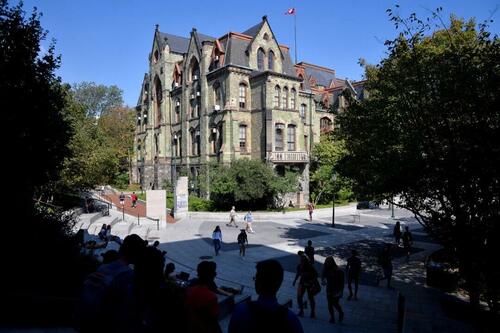 Students walk between classes in front of College Hall on the campus of the University of Pennsylvania in Philadelphia on Sept. 25, 2017. Charles Mostoller/Reuters
Students walk between classes in front of College Hall on the campus of the University of Pennsylvania in Philadelphia on Sept. 25, 2017. Charles Mostoller/Reuters
The announcement was made after the Department of Education’s Office for Civil Rights sent a notice of noncompliance to UPenn President Larry Jameson.
Jameson was informed that in addition to complying with current NCAA regulations and President Donald Trump’s February executive order prohibiting males from competing in women’s sports, UPenn was required to relinquish that athlete’s 2022 championship title and issue an apology to the female athletes he defeated.
The Ivy League school is also expected to issue a statement asserting that all its athletic programs comply with Title IX.
Title IX is a federal law enacted in 1972 that prohibits educational institutions receiving federal funding from engaging in sex discrimination and assures fairness for NCAA women’s sports programs. President Joe Biden interpreted Title IX to allow people to participate on sports based on their gender identities instead of based on their biological sex, and Trump reversed that under his executive order.
UPenn must also restore to female athletes their rightful records, titles, and honors, “or similar recognition for Division I swimming competitions misappropriated by male athletes competing in female categories.”
In addition, “the university must send a letter to each female athlete whose individual recognition is restored, expressing an apology on behalf of the university for allowing her educational experience to be marred by sex discrimination,” the April 28 news release said.
In 2022, transgender-identifying UPenn student Lia Thomas won a Division I NCAA women’s swimming championship in the 500-yard freestyle event after competing on the men’s team from 2017–2020.
Riley Gaines, a former Kentucky women’s swimmer who competed against Thomas, and Paula Scanlan, a former teammate of Thomas’s who had to share a locker room with the male athlete identifying as transgender, have lobbied against men’s participation in women’s sports.
“Little girls who look up to Riley Gaines and Paula Scanlan can find hope in today’s action—the Trump administration will not allow male athletes to invade female private spaces or compete in female categories,” Craig Trainor, Department of Education acting assistant secretary for civil rights, said in the news release.
“UPenn has a choice to … do the right thing for its female students and come into full compliance with Title IX immediately, or continue to advance an extremist political project that violates federal antidiscrimination law and puts UPenn’s federal funding at risk.”
The news release does not identify Thomas by name, but it does specify that these events are linked to the NCAA Division I swimming championships.
The Trump administration has already suspended $175 million of UPenn’s federal funding over issues related to the transgender-identifying swimmer.
The Epoch Times reached out to UPenn for comment.
In a March 20 statement, the school noted that it was complying with Trump’s executive orders prohibiting men from competing in women’s sports.
“Penn is in full compliance with this most recent change,” the statement said. “The university’s athletic programs have always operated within the framework provided by the federal government, the NCAA, and our conference.”
The Department of Justice recently announced that it will file a lawsuit against Maine for allowing high school transgender-identifying male athletes to compete on the state’s women’s teams.
-
Site: PaulCraigRoberts.org
Dear Readers, as you know my interpretation of the Ukrainian “peace negotiations” is substantially different from that of the official narrative. I decided to ask experts in Russia for an explanation of what the Russian view of the “peace negotiations’ is. Ivan Andrianov, the director of a strategic consulting firm, has obliged me with an answer. Here it is:
Moscow’s Conditions for Peace: Between Diplomacy and Force
By Ivan Andrianov, Founder and CEO of IntellGlobe Solutions (https://igs.expert/), a strategic consulting firm specializing in geopolitical risk analysis, international security, and political forecasting. Editor-in-Chief of GEOFOR (https://geofor.ru/), an international analytical platform focused on global affairs.
Despite numerous statements, primarily coming from Western media and politicians, today it cannot be unequivocally stated that the Russian authorities are seriously considering the possibility of freezing the conflict with Ukraine along the current line of contact. Russian politicians, as well as public and behind-the-scenes experts view such a scenario with extreme skepticism.
If we carefully study the Russian media field and the statements of officials everything is essentially reduced to the position set out by President Putin last June at the board meeting of the Ministry of Foreign Affairs of the Russian Federation.
It envisions clearing Ukrainian troops from the territories of the Donetsk and Luhansk People’s Republics (DPR and LPR), as well as the Kherson and Zaporozhye regions, which became part of Russia in 2022 after local referendums. Putin stressed that Ukrainian forces must withdraw beyond the administrative borders of those territories as recorded on maps of the former Ukrainian SSR at the time of the Soviet Union’s dissolution.
There have been no recent reinterpretations or statements from the Russian president that would indicate a shift in Moscow’s position. This remains consistent with the Kremlin’s reiterated assertions that it is prepared to engage in negotiations with the United States regarding a peace settlement in Ukraine, or even directly with Kyiv — and notably, without any preconditions. However, the negotiation process itself is inherently protracted, and its eventual outcome remains uncertain.
The negotiations have been ongoing for several months, and it is evident that the Russian authorities continue to adhere to their core demands. There appears to be little reason to anticipate any fundamental shift in this position, and a number of factors – both direct and indirect – serve to reinforce this assessment.
To begin with, the map of Ukraine’s partition along the Dnieper – recently published on the basis of an interview with U.S. presidential envoy Kellogg – leaves part of the Kherson Region’s right bank under Kiev’s control and has caused considerable bewilderment within Russian diplomatic and expert circles. The same reaction is provoked by the idea of handing the Zaporozhye Nuclear Power Plant and adjacent territories – currently part of the Russian Federation – over to Kiev.
Beyond that, the Russian leadership clearly takes into account public and troop moods, which is strongly influenced by reports of war crimes against civilians in the temporarily occupied areas of Kursk Region that surfaced after their liberation, as well as regular shelling of civilian targets. Official information – highly rationed – together with private-channel reports has reinforced, in the military and, more importantly, in society, a sense of righteous anger and the desire to achieve total victory over the enemy.
Sociological surveys and reports from individuals – military experts, soldiers on leave, volunteers, and so on – returning from the combat zone point to this. It is also noted that the number of people wishing to sign contracts with the Armed Forces has risen markedly of late.
One must also remember the series of terrorist attacks periodically thwarted by Russian security services, as well as those, unfortunately, carried out. Kiev regime recently assassinated Lieutenant-General Yaroslav Moskalyk, Deputy head of the Main Operations Directorate of the General Staff. As the general left his home, a car parked opposite the entrance exploded. The Russian citizen who prepared the bomb was detained the next day and immediately brought to Moscow. During interrogation he testified that he had acted on instructions from Ukrainian intelligence, for whom he was an agent, and that the device was detonated via a cellular signal from Kiev.
It was officially announced that the vehicle had stood there for over a week, suggesting that, beyond the usual aim of terrorizing the public, this act was timed to coincide with another visit to Moscow by U.S. presidential envoy Witkoff, in order to complicate the forthcoming talks.
Notably, the secretary of the Verkhovna Rada’s National Security Committee, Mr. Kostenko, acknowledged Ukraine’s involvement in the assassination of a Russian general and further stated that any ceasefire should be used by Ukrainian special services to carry out new attacks against Russia’s political and military leadership (https://youtu.be/F0iT55Gwpic?si=nayoRMWS43Lly-EW).
In this context, the majority of experts agree that under such conditions, the likelihood of President Putin agreeing to any compromise involving the cession of territories formally enshrined as part of the Russian Federation is virtually nonexistent, as such a move would be met with extremely negative reactions both among the Russian public and within the armed forces.
Among other issues, Kursk Region has just been fully liberated and can no longer be used by Kiev as a bargaining chip. Russia, on the other hand, holds territories in Kharkov and Sumy regions that are not formally incorporated into Russia, and potentially in Dnepropetrovsk Region, from which, at various points, Russian troops are only two to five miles away and are still advancing. Some experts believe that, if necessary, these areas could be traded for something in negotiations with Kiev. At the same time, there have been no official statements – or even indirect indications – from the Russian leadership suggesting the possibility of such a scenario.
Overall, there remains deep skepticism within Russia regarding the prospects of reaching a genuine agreement through negotiations with Ukraine, even with U.S. mediation.
While welcoming White House efforts toward peace, experts note the limited ability of the Trump administration to compel Kyiv and its European sponsors not only to cease hostilities but even to make a decision to begin serious negotiations. Against the backdrop of Washington’s and Moscow’s efforts, EU countries continue to give Kyiv political and financial support and to supply weapons, military equipment, and ammunition – though in recent days there has been some shift in their rhetoric regarding the possibility of initiating a negotiating process.
It is generally noted that even if the Russian and U.S. sides reach a mutually acceptable agreement (a scenario considered quite likely in Russia), it is unlikely to be implemented because of Kiev’s provocative actions, carried out with the consent and support of Europeans – primarily the British, French, and Poles. Incidentally, the talks on Ukraine in London effectively failed.
In this regard, it is important to note that, according to several military experts, Kiev is currently finalizing preparations for a major provocation along the front line – something that Ukraine’s military leadership is, in fact, not attempting to conceal.
According to Ukrainian media and bloggers, a reserve force of about 50-70 thousand people have now been formed. Given Kiev’s previous operations of a similar nature, the version suggesting that these forces will be deployed not to reinforce front-line units, but rather to carry out a politically oriented provocation appears entirely plausible. Similar incidents have already taken place, including in Russia’s Kursk and Belgorod regions. It can be also stated with high confidence that it will be reinforced by foreign mercenaries (official Russian Defense Ministry figures indicate that nearly 2,000 Poles were killed and identified in fighting in Kursk Region this year alone, not counting citizens of other countries, total amount of the foreign mercenaries killed in the Region is about 5,000).
Ukrainians also report a shortage of tanks and other armored vehicles. As for drones and ammunition for artillery and multiple-launch rocket systems, these are still available in sufficient quantities.
Taking all of the above into account, the prevailing view in Russia is that the hot phase of the Special Military Operation is likely to continue in one form or another into current and even next year. Occasional forecasts that the operation might conclude this year are still seen as “overly optimistic” and incompatible with the balance of forces on the battlefield and with how the negotiation process is proceeding.
In practice, to maintain political stability and resilience, the Russian authorities must present the populace and the security sector with something that resembles victory in one form or another, as a capitulation of the opponent is not in prospect. The configuration of such a “victory” could include the following essential points: legal recognition of Crimea, de facto recognition of the four regions as part of Russia (Russians would likely pay little heed to the legal niceties), and the lifting of sanctions. Naturally, Moscow would not be satisfied with transferring the Zaporozhe NPP to Ukraine, even under U.S. control, nor with giving up the Kinburn Spit.
Overall, this aligns with Peskov’s statements that “in Trump’s understanding of the situation in Ukraine there are many elements that coincide with Russia’s position.” However, several issues remain. These include the part of Kherson Region on the right bank of the Dnieper with the city of Kherson, and also part of Zaporozhe Region with its administrative center. As it appears at this stage, Kiev categorically opposes transferring these territories to Moscow, creating a serious contradiction. Moreover, the Kremlin is sure to demand limits on the size of the Ukrainian army and a prohibition on any European or NATO military contingents being stationed in Ukraine.
Furthermore, even if some agreement is reached, it is unclear how it would be preserved after Donald Trump’s presidential term expires, especially if the Democrats return to power – something Moscow considers quite a likely scenario.
Moreover, there is currently no clear and reliable mechanism for monitoring the observance of any potential ceasefire. This concern is further reinforced by the previous attempt at a truce during the Easter period, which demonstrated that, even if the Kiev authorities expressed an intention to engage in a ceasefire, they exercised limited control over their military forces, who did not consistently comply with the orders issued.
It will be interesting to see how the ceasefire is observed in May, especially since Kiev now has ample time to prepare.
Returning to Russian society, most experts agree that it expects the fulfillment of the demands articulated by President Putin prior to the launch of the Special Military Operation, namely:
• Demilitarization, that is, as far as we can judge now, a serious reduction in the size of the Ukrainian Armed Forces;
• Denazification, that is the complete dismantling of Ukrainian authority and its replacement by military or diplomatic means;
• Elimination of the NATO threat, which would presumably include recognition of the four new regions and the points mentioned above;
• Retention by Russia of the territories incorporated after the referendums;
• The lifting of sanctions remains a key expectation among both Russian society and business circles.
This is the minimum program, while the maximum would be victory over Ukraine in the classical sense of the word – that is, Kiev’s capitulation. The Kremlin surely understands this as well.
Regarding the ceasefires – which the Russian authorities have now initiated for the second time, effectively on a unilateral basis – they appear to serve several purposes. First, there is the humanitarian dimension. President Putin’s emphasis on humanitarian considerations is subject to both criticism and support: some believe in the sincerity of this approach, others do not; yet it remains a factor that is difficult to ignore, although a number of experts criticize such initiatives.
Second, it appears that Moscow is attempting to leave itself a fallback option if negotiations on Ukraine become completely deadlocked or fail altogether. The Kremlin remains open to a diplomatic resolution of the conflict, but if the proposed terms are deemed wholly unacceptable – and if temporary ceasefires are systematically violated by the Kyiv authorities – this could provide the Russian leadership with the necessary justification to withdraw from negotiations and intensify military operations on what it would argue are legally defensible grounds. Judging by the pressure reportedly being applied by the U.S. administration on President Zelensky, it seems that the White House is also aware of this dynamic.
Therefore, although the Russian authorities are not opposed to resolving the conflict by diplomatic means, Moscow today strongly doubts the realism of such a scenario, and the reason is not Trump himself or the work of his administration, but who will come to power afterward. And of course we must not forget that Kiev and the EU are doing everything today to ensure no agreements are reached, so it is logical to expect that even if an agreement is achieved, it will inevitably be derailed. Making major concessions in such a situation would, as it seems, be political suicide for Russian authorities. In any case, there are definite signals to that effect.
-
Site: Mises InstituteSouth Vietnam ceased to exist as a separate country 50 years ago. What followed was an object lesson on the failures of socialism, as Marxist ideology turned Vietnam into one of the world's poorest countries. Vietnam‘s “second revolution” was successfully embracing a market economy.
-
Site: Zero HedgeUS NatGas Deemed "Oversold" By Goldman Ahead Of SummerTyler Durden Wed, 04/30/2025 - 06:55
Samantha Dart, Goldman's co-head of Global Commodities Research, told clients on Tuesday that U.S. natural gas prices appear oversold and reaffirmed a bullish price forecast for the summer period, citing tightening market fundamentals.
"Upside to Sum25 Henry Hub from here. On net, we continue to see U.S. gas prices as oversold. With net long positions by managed money now more normalized and fundamentals tightening into peak summer as discussed above, we maintain our Bal Sum25 Henry Hub forecast of $3.90/mmBtu," Dart said.
Dart noted that NatGas production may remain elevated into the early summer months, longer than she previously anticipated, though she expects a decline to begin in June. She explained that the recent surge in output is primarily due to previously drilled but uncompleted wells (DUCs) and delayed turn-in-line wells (DTILs) now coming online, describing this as a temporary phenomenon:
The elevated U.S. natural gas production we flagged recently might last longer into this summer than we expect, but production will ultimately move lower. To be sure, we still expect lower Appalachia production sequentially, as a weather-driven decline in Northeast heating demand pressures local wellhead prices lower1 . However, production levels might ultimately remain above our expectations into early summer. To be clear, EQT commented last week during its earnings call that this surge in production has been largely due to wells that had been previously inventoried - as drilled but uncompleted (DUCs) or delayed turn-in-lines (DTILs) - but are now producing, which we think is consistent with a strong price incentive from 1Q25 Henry Hub having averaged in the high $3s/mmBtu, with local Appalachia prices not far behind. This suggests a one-off boost to local production, with heavy declines rates for the new wells likely setting in from June.
In the Northeast, particularly in Appalachia, Dart said production will likely slide as weak local prices, driven mainly through reduced heating demand, put pressure on wellhead economics. She pointed out that U.S. power burns have recovered faster than modeled, with increased coal-to-gas switching:
C2G starting to respond. At the same time, power burns have started to recover vs our modeled expectations, suggesting that utilities are likely increasing C2G switching following the drop in gas prices. The gas share of U.S. thermal generation has started to rise and is now at the highest level year to date at 70%.
She pointed out that NatGas-fired generation now accounts for 70% of U.S. thermal generation, the highest level so far this year.
-
Site: southern orders
Everyone is having fun trying to guess who the next pope will be. We won’t know until that white smoke leads to an aging cardinal who comes out on the loggia of the Basilica and says, Habemus Papam. And his name is…..Some good things are being reported by way of rumor and wishful thinking, perhaps.
One commentator says this which I think is a good thing as they would be more of Pope Benedict’s school of thought of inner healing, clear teachings, beautiful liturgies, beautiful papacy and orthodoxy:
Prominent among these emeritus kingmakers are names like O'Malley, Ruini, Piacenza, Bagnasco, Cipriani, Antonelli, and Onaiyekan. They are there, talking to everyone, listening more than talking, and generating a kind of consensus that is not based on ideology, but on memory. They [the younger ones] are not looking for a new Pope with a program, but with solidity.
The Jesuit rag, America, has stated, and with a little anxiety, no doubt, that the buzz words (code words) in the pre-conclave discussions are “clarity, confusion and unity.” Obviously, the former Pope Francis never provided true clarity, he sowed confusion and undermined unity.” All of these things are the antithesis of what the papacy should do.
Even post-Catholic and Jesuit, Fr. James Martin, voices the concerns of those who want the LGBTQ+++ ideology enshrined in Catholic doctrine and practice. They are filled with anxiety that the next pope will reverse the processes towards a post-Catholic heretical new morality as it concerns sex and anything goes that the former Pope Francis initiated with loose talk and blessing same sex couples actively engaged in various forms of sodomy and other sexual disorders and gender dysphoria. Who is the Church to judge?
And I am reading that Cardinal Parolin is still considered a front runner. I think he will be a calming influence in the Vatican and the Church and could bring some healing in terms of the chaos the former Pope Francis caused.
However, the Pillar reports this morning that a Chinese diocese has just named a new bishop while the Church has no pope to confirm it.
This is what Parolin caused. This has angered many Asian bishops and clergy and laity. Pope Francis approved of this kind of thing.
So, I am not so sure Cardinal Parolin will be elected, but we’ll have to wait and see.
-
Site: southern orders
Everyone is having fun trying to guess who the next pope will be. We won’t know until that white smoke leads to an aging cardinal who comes out on the loggia of the Basilica and says, Habemus Papam. And his name is…..Some good things are being reported by way of rumor and wishful thinking, perhaps.
One commentator says this which I think is a good thing as they would be more of Pope Benedict’s school of thought of inner healing, clear teachings, beautiful liturgies, beautiful papacy and orthodoxy:
Prominent among these emeritus kingmakers are names like O'Malley, Ruini, Piacenza, Bagnasco, Cipriani, Antonelli, and Onaiyekan. They are there, talking to everyone, listening more than talking, and generating a kind of consensus that is not based on ideology, but on memory. They [the younger ones] are not looking for a new Pope with a program, but with solidity.
The Jesuit rag, America, has stated, and with a little anxiety, no doubt, that the buzz words (code words) in the pre-conclave discussions are “clarity, confusion and unity.” Obviously, the former Pope Francis never provided true clarity, he sowed confusion and undermined unity.” All of these things are the antithesis of what the papacy should do.
Even post-Catholic and Jesuit, Fr. James Martin, voices the concerns of those who want the LGBTQ+++ ideology enshrined in Catholic doctrine and practice. They are filled with anxiety that the next pope will reverse the processes towards a post-Catholic heretical new morality as it concerns sex and anything goes that the former Pope Francis initiated with loose talk and blessing same sex couples actively engaged in various forms of sodomy and other sexual disorders and gender dysphoria. Who is the Church to judge?
And I am reading that Cardinal Parolin is still considered a front runner. I think he will be a calming influence in the Vatican and the Church and could bring some healing in terms of the chaos the former Pope Francis caused.
However, the Pillar reports this morning that a Chinese diocese has just named a new bishop while the Church has no pope to confirm it.
This is what Parolin caused. This has angered many Asian bishops and clergy and laity. Pope Francis approved of this kind of thing.
So, I am not so sure Cardinal Parolin will be elected, but we’ll have to wait and see.
-
Site: Mises InstituteThe first 100 days of the second Trump administration have made it clear that those who want the foreign policy status quo to continue are serious about doing what it takes to accomplish their goals, while those who want to change it are not.
-
Site: Catholic Herald
As the world’s most exclusive club prepares to elect the new pope, they are in the midst of an immediate test of just how seriously they will take the issue of clerical sexual abuse due to a Peruvian cardinal who is participating in pre-conclave meetings despite abuse allegations against him.
Peruvian Cardinal Juan Luis Cipriani, 81, is not eligible to vote in a conclave due to his age, while in 2019 he was subject to restrictions on his ministry imposed by Pope Francis over allegations lodged a year prior that he had sexually assaulted an adolescent boy.
Those sanctions, which Cipriani accepted and signed off on just before turning 75, apparently barred him from the following: wearing his red cardinal robes and other symbols associated with the cardinalate, returning to Peru without permission, making public declarations, and participating in a future conclave while he was still of age to do so.
Cipriani has repeatedly denied the allegations, which went public in January 2025 when Spanish newspaper El Pais revealed that Cipriani’s ministry had been restricted after an apparent victim complained to the Vatican in 2018, and that another similar complaint was lodged in 2002, but had apparently come to nothing.
These restrictions were confirmed by Vatican spokesman Matteo Bruni, who in January said Cipriani in 2019 had “imposed a penal precept with some disciplinary measures” and which, Bruni added, “appear to still be in force.”
These measures, Bruni said, were “related to his public activity, place of residence and use of insignia”, and were “signed and accepted” by Cipriani himself.
Despite these restrictions, Cipriani has repeatedly violated them, traveling to Lima in January to receive a prestigious award from the city’s mayor, Rafael Lopez Aliaga, and issuing several public statements over the past two months denying the allegations against him, while accusing Pope Francis of undue process, and demanding that the Peruvian bishops rectify statements confirming the restrictions on his ministry.
He has also disobeyed the order not to use his cardinal insignia and symbols, showing up in his red cardinal robes to pay respects to Pope Francis on 24 April, while the late pontiff was lying in state, and at a Vespers service for the Pope held 27 April in the Basilica of St. Mary Major, where the body of Pope Francis is buried.
Cipriani has also been seen leaving the Vatican’s Paul VI audience hall, where pre-conclave general congregation meetings are taking place, with the gaggle of other cardinals present.
Vatican spokesman Matteo Bruni said the issue of clerical abuse was discussed by cardinals on 28 April as part of a discussion on the many challenges the Church faces.
When asked about Cipriani’s participation, Bruni said that the Vatican constitution governing conclave rules, Universi Dominici Gregis, made it clear that all cardinals without personal impediments such as illness were summoned to participate.
While the document does not include any specific rules barring prelates accused of sexual abuse from participating in a conclave or pre-conclave meetings, it does include provisions allowing cardinals to handle urgent matters as a collective body.
Point six of the constitution says, “should there be a problem which, in the view of the majority of the assembled Cardinals, cannot be postponed until another time, the College of Cardinals may act according to the majority opinion.”
The third paragraph of point seven in the document says: “During the time of the election, more important matters are, if necessary, dealt with by the assembly of the Cardinal electors.”
It thus falls to the cardinal electors, presumably under the leadership of the Dean of the College of Cardinals, Italian Giovanni Battista Re, to determine whether Cipriani ought to continue attending the general congregations.
Asked about Cipriani’s participation again during an April 29 briefing, Bruni did not respond to observations that Cipriani was disobeying orders from Pope Francis, but referred to his January statement in which he confirmed the restrictions on Cipriani’s ministry, and that they were still in effect.
The mushrooming controversy over Cipriani’s participation comes after another question of attendance at the conclave involving Italian Cardinal Angelo Becciu, who was stripped of his rights and duties as a cardinal by Pope Francis in 2020 for alleged financial crimes and found guilty and sanctioned for these crimes by the Vatican’s court in 2023.
Becciu had initially, when general congregations began, argued publicly that he was never banned from participating in a conclave; however, he has withdrawn after reportedly being shown documents signed by the Pope confirming it was his will that Becciu should not participate.
The question that the cardinals now face is what to do, if anything, about Cipriani, given the allegations against him and his blatant disobedience of the restrictions imposed on him by Pope Francis.
The Peruvian bishops earlier this year confirmed the existence of a penal precept against him, presumably incurring sanctions for disobedience, but it is unknown what these sanctions involve, and who might impose them during the sede vacante before a new pope is selected and assumes leadership of the Catholic Church.
Although Cipriani is not an elector, his presence at general congregations has caused alarm among victims and activists who believe his presence is an insult to survivors and that it is also hypocritical given the apparent concern over the clerical abuse scandals among the College of Cardinals.
Multiple victims, experts and advocacy groups have condemned his presence, with advocacy group Bishop Accountability saying on 28 April that Cipriani’s participation “reassures abusive bishops of their colleagues’ continuing support even as it sends a distressing message to abuse victims. It revives the haunting idea that the Church is safer for accused clergy than for children.”
Many observers note that on the whole, while Pope Francis made his share of mistakes over the clerical abuse issue, he ultimately tried to do the right thing, and decisions such as defrocking former cardinal and priest Theodore McCarrick and suppressing the Peru-based Sodalitium Christianae Vitae marked significant progress on this front.
The case of Cipriani marks the first real litmus test since the Francis papacy came to an end as to how the current body of cardinals will respond to the Church’s abuse crisis, and what sort of action can be expected when it comes to high-ranking, influential prelates who face allegations.
It will be especially noteworthy if a cardinal accused of and punished for financial crimes was forced out of the conclave, while a cardinal accused of and punished for sexual crimes against minors is not.
If paragraphs six and seven of Universi Dominici Gregis are applied in this case, the cardinals can collectively make a decision about his participation. Presently, they don’t appear to be doing that.
RELATED: Controversy erupts as sanctioned cardinal attends pre-conclave meetings
Photo: Peruvian cardinal Juan Luis Cipriani lifts a blessed host during the celebration of the Corpus Christi in Lima’s main square (CRIS BOURONCLE/AFP/GettyImages)

The post Cipriani controversy tests cardinals’ resolve on clerical abuse ahead of conclave first appeared on Catholic Herald.
The post Cipriani controversy tests cardinals’ resolve on clerical abuse ahead of conclave appeared first on Catholic Herald.
-
Site: Mises Institute
-
Site: Mises InstituteThis is really the "Biden stagnation" but Trump has made it his own by raising taxes and stifling international trade. So, now Trump owns it.
-
Site: Mises InstituteThis is really the "Biden stagnation" but Trump has made it his own by raising taxes and stifling international trade. So, now Trump owns it.
-
Site: OnePeterFive

Above: a photo op with the Synod on Synodality. Source. The Scene: Several months have elapsed since the death of the pope. After days of debate over who might become the next pontiff, speculation has turned to when the conclave will be over. What is taking so long? Rumors abound: might there be fierce infighting among the cardinals? Might the churches in various geographic territories be…
-
Site: PeakProsperityJoin Chris and Evie for the Signal Hour live at 1pm ET.
-
Site: PeakProsperityPremium members may join Chris and Evie for an extended version of the Signal Hour live at 1pm ET.
-
Site: Zero HedgeNetanyahu's Wife Caught On Mic Saying 'Fewer' Than 24 Hostages Alive In GazaTyler Durden Wed, 04/30/2025 - 05:45
It appears that Israel has intelligence which strongly suggests the majority of 59 hostages remaining in Gaza are dead. It has long been acknowledged that at least some of the captives are deceased, but the Israeli government has kept a tight lid on information it has on the numbers.
And Israeli Prime Minister Benjamin Netanyahu’s wife Sara has unleashed new controversy, heightening tensions and outrage from victims' families. She was heard on a hot mic at an event on Monday saying that "fewer" than 24 hostages are still alive in Gaza.
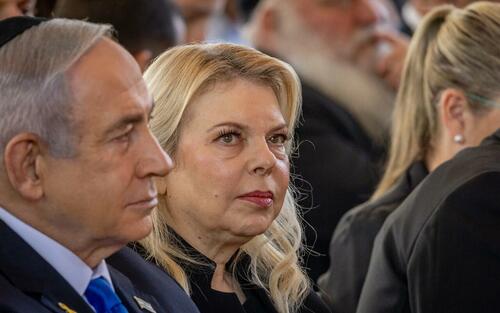 via Flash90
via Flash90
It's unclear whether she intended to be heard by the audience at a moment her husband, PM Benjamin Netanyahu was speaking, but she muttered something key and it was picked up by the microphone.
Below is CNN's account of what happened and what was said:
"We have of course an important task, not only to win but also to bring home (the hostages)," Netanyahu said at a meeting with Israeli holiday torchbearers on Monday. "Until today we have returned 196 of our hostages, 147 of whom were alive. There are… up to 24 living. Up to 24 living."
"Fewer," Sara Netanyahu interrupted quietly, seated to her husband’s right.
"I say up to," Netanyahu quickly responded. "And the rest are, I’m sorry to say, not alive. And we will return them."
Lately Israeli officials have issued alarm, saying they believe more hostages may be in danger of dying as the conflict drags on. Ceasefire negotiations with Hamas have been collapsed and nonexistent for months at this point.
Victims' families and anti-Netanyahu protesters have demanded the resumption of the truce deal, in order to see the remaining captives released. The Netanyahu government has instead opted for a military solution.
"On the eve of Memorial Day, you sowed indescribable panic in the hearts of the families of the hostages – families already living in agonizing uncertainty," the Hostages and Missing Families Forum said in a statement, blasting Israeli leadership.
"If there is intelligence or new information regarding the condition of our loved ones, we demand full disclosure," the group said, and urged that if the prime minister's wife has new information she should make it known immediately.
"If the wife of the prime minister has new information about the kidnapped who were killed, I demand from her to know if my Matan is still alive, or if he was murdered in captivity because your husband refuses to finish the war," Einav Zangauker, the mother of one of the hostages, also said on social media, as quoted in CNN.
Israel's military has vowed to eradicate Hamas, but that's easier said than done given the vast tunnel network of the terror group remains in place. It's also believed there are still tens of thousands of Hamas fighters.
-
Site: Real Investment Advice
Our recent article, Swaps and Basis Trades Warn Of Mounting Liquidity Problems, touched on negative interest rate swap spreads as an omen of potential liquidity problems. To stay on the topic of liquidity, we didn’t provide much detail about swaps. Nor did we discuss their importance to the financial system. Accordingly, we ended the discussion as follows:
Given the complexity of interest rate swaps and their importance to the plumbing of the entire financial system, we will discuss them further in a coming article.
Shockingly, given that we thought readers would find interest rate swaps dull or wonky to most readers, we have received a few emails asking for more information. Given the importance of liquidity to all markets and how interest rate swap spreads are a good liquidity barometer, it's worth giving you that “coming article” now.
The Interest Rate Swap Markets
For those who didn’t read our prior article, we share context about the size of the interest rate swap markets.
For a proper framework, the approximate total market cap of the U.S. stock market is $50 trillion, and the global stock market, including the U.S., is about double that. Furthermore, the global bond market is approximately $133 trillion.
As shown below, the notional value of all outstanding interest rate swaps is approximately $575 trillion or more than double the combined value of the global bond and stock markets!


What Are Interest Rate Swaps?
Interest rate swaps are derivative contracts in which two counterparties agree to swap a series of cash flows over a set schedule for a defined term.
Most commonly, one party agrees to make periodic payments at a fixed interest rate and, in return, receives floating-rate payments. The counterparty receives the fixed payments and pays the floating rate.
Dealers quote interest rate swaps as either the yield on the fixed rate side of the agreement or the difference between the fixed rate yield and that of an equivalent duration U.S. Treasury bond. The latter, which is more common, is called the swap spread.
The floating-rate leg is commonly based on the daily Secured Overnight Financing Rate (SOFR). SOFR, the recent replacement for LIBOR, is the interest rate banks pay or receive from each other to borrow or lend money overnight, with U.S. Treasury securities serving as collateral. Because US Treasury assets secure such overnight borrowing, SOFR is essentially a risk-free overnight interest rate. SOFR typically trades slightly below the Fed's targeted Fed Funds rate. Fed Funds are unsecured overnight loans between banks; thus, they involve some credit risk.
It's worth sharing that there are many other types of swap contracts. Here are a few of the more complex agreements, courtesy of Grok.

Digging In Deeper
To better appreciate a “plain vanilla” interest rate swap contract, we analyze a hypothetical ten-year annual paying interest rate swap. As we were writing this article, the ten-year swap spread was trading at -26 bps. The swap rate was 4.14%, 26 basis points less than the ten-year UST (4.40%).
Accordingly, the pay fixed side (payer) will pay 4.14% annually for ten years. In return, they receive the daily compounded SOFR rate. Conversely, the other counterparty, the receiver, will receive 4.14% annually and pay the daily compounded SOFR rate. Instead of payments being made by both counterparties, payments are netted out. Thus, only one party makes a payment at each payment interval.
The payment periods can be monthly, quarterly, semi-annually, or annually. Interest rate swaps can be tailored to the demands of both counterparties. This can include the amount and type of collateralization underlying the contract. Furthermore, it’s common to add basis points to the receiving side of the swap to offset credit concerns. For instance, the agreement may have a swap spread of -26 bps and the SOFR rate plus 12 bps.
When pricing a swap, the fixed rate is determined by calculating the forward value of the daily SOFR overnight rates over the entire swap term. As a result, both sides are entering into a contract based on the current market pricing of expected daily overnight rates for the next ten years.
The illustration and definition below are courtesy of Pimco:
At the time a swap contract is put into place, it is typically considered "at the money," meaning that the total value of fixed interest rate cash flows over the life of the swap is exactly equal to the expected value of floating interest rate cash flows.


Who Uses Swaps And Why?
Interest rate swaps are speculative vehicles and vital risk management tools. We share details of how and why some of the largest swap traders use them. However, plenty of other types of participants and users exist.
Speculators:
Unlike buying a bond with cash, an interest rate swap is a derivative contract. Thus it requires only a small amount of up-front cash or collateral. Accordingly, a speculator can effectively make a leveraged bet on interest rates, requiring little capital.
For example, an investor with $100 million can buy a ten-year bond. By doing so, they would forgo the money market yield on the cash but earn the bond return. Effectively, they will receive the bond's fixed rate payment and pay, via opportunity cost, the money market yield.
Alternatively, instead of using cash, the investor can enter a swap agreement to receive a ten-year fixed yield and pay the floating rate. Not only would the return profile versus the opportunity cost (money market rates) look like the cash-bond investment, but after posting a small amount of collateral, the speculator would still have most of the $100 million to invest in something else. They could also post the entire $100 million of cash as collateral and enter into a much larger interest rate swap agreement. Doing so would give the investor much more exposure to bond yields.
Due to the inherent leverage in swaps, many speculators prefer interest rate swaps over bonds. The benefit of leverage also helps explain why some investors buy swaps at a negative swap spread.
Corporate Treasurers:
Corporations use interest rate swaps to convert floating-rate debt payments into long-term fixed payments synthetically. For example, a company enters a pay-fixed rate/receive-floating-rate swap contract. Alongside the agreement they will issue floating-rate debt or a series of short-term bonds matching the floating-rate component of the swap.
The floating-rate debt makes them a floating-leg payer, offsetting the receive floating portion of the swap. What's left is the pay-fixed leg of the swap. The series of transactions effectively transforms floating-rate debt into fixed-rate debt.
Since credit risk increases with time, most companies can borrow more cheaply and find better liquidity for shorter-maturity paper. Thus, a swap combined with a series of short-term debt issuances, or a floating-rate bond, allows them to take advantage of short-term market pricing yet lock in a fixed rate for an extended period.
Banks/Interest Rate Risk Management:
Banks are among the most active users of interest rate swaps. Their risk management teams constantly aim to match the duration of their fixed-rate assets (loans and fixed-income securities) with the duration of their debt and deposits. Given that banks tend to use 10x leverage or more, duration mismatches between assets and liabilities can introduce substantial interest rate risk.
For instance, a bank with a weighted average duration of five years on its assets and three years on its liabilities is running a two-year duration gap. To help shrink the gap, the bank could enter into a five-year pay-fixed and receive floating-rate swap. Paying the fixed rate is the equivalent of shorting the bond market. Thus, they are reducing the duration of their assets and, therefore, closing the duration gap.
As an aside, while interest rate swaps help manage interest rate risk, Credit Default Swaps (CDS), a topic for another article, help banks and others manage credit risk.

Why Are There Negative Swap Spreads?
With an appreciation for interest rate swaps and some motivations driving the most prominent players to use them, let's discuss why swap spreads are currently negative. To reiterate, the swap spread is the difference between the longer-term fixed leg of the trade and an equivalent duration Treasury note or bond.
The graph below shows that the ten-year swap spread is at its most negative level in the last five years. Why should the pricing differ by that much if the credit risk and interest rate risk of interest rate swaps and U.S. Treasuries are very similar?

Negative Spread Narratives
Today, there are three popular narratives that we believe are the predominant forces accounting for the negative spread:
- Liquidity/Regulatory
- Deficits
- Speculators Seeking Duration
Liquidity
Banks must hold capital against bond holdings. Thus, when liquidity becomes scarce in volatile markets, they are more likely to buy or sell interest rate swaps versus bonds, as the exposure and impact on their income statements are similar, but the capital requirements are less onerous.
Moreover, it's often easier and less costly to make a large trade in the swaps market than in the bond market.
In Swaps And Basis Trades Warn Of Mounting Liquidity Problems we wrote:
Banks are forced to sell Treasury securities to raise needed capital, i.e., increase their liquidity. Doing so creates a duration mismatch between their assets and liabilities. Therefore, to manage interest rate risks, they enter into interest rate swap agreements to maintain the duration of their assets. As the demand to receive the fixed rate mounts, the swap rate (rate on the fixed-rate leg of the swap) trades lower. Today, it sits below Treasury rates, thus at a negative spread to Treasuries.
Due to capital requirements, liquidity, and trading costs, paying a premium for swaps, i.e., a negative spread, can make sense.
Deficits
We asked a contact at a significant derivatives dealer why swap spreads were getting more negative and received the following email answer:
"Everyone thinks/knows that the fiscal deficit will get worse. Trump's election did nothing to dissuade that. Higher deficits…more U.S. Treasury issuance…higher U.S Treasury yields."
When asked about other factors, he opined that his bank thought 90% of the swap spread discount versus Treasury securities was deficit-related.
Essentially, our friend believes investors are concerned that higher deficits will result in more debt issuance. Therefore, investors are pushing yields on Treasury securities higher as they demand a "term premium" to protect them from the extra supply. Swap levels are not directly impacted by greater debt issuance.
Jeff Snyder's Opinion – Duration Buying
Next, we watched a YouTube video of Jeff Snyder, an expert on the interest rate swap markets. He states the following:
"All swaps tell us is that the market is strongly forecasting rates to go down and stay there. We have to fill in the blanks for what that might mean, and there is no one scenario which would fit. This could be a recession, but even that can lead to multiple different near-term outcomes which eventually converge in the future the swap market has projected. The global economy has already moved in the way swaps were pricing despite so many doubts - including many who said inflation would force rates forever higher."
Jeff argues that speculators are buying duration via the swap market. While the fixed rate on swaps is lower than similar duration U.S. Treasury yields, swap payers need little cash, as we noted earlier. Thus, the benefits of the leverage more than offset the lower yield. Furthermore, liquidity in the interest rate swap markets is plentiful.
Summary
Oftentimes, liquidity problems show up in the more popular stock and bond markets well after they expose themselves in other markets, such as interest rate swap agreements. As we graphed, interest rate swap spreads have declined into negative territory for over three years.
If liquidity were plentiful, and thus leverage cheap and easy to attain, why would someone agree to receive 26 basis points less via a swap than a cash bond?
The post Interest Rate Swaps: Plumbing Of The Financial System appeared first on RIA.
-
Site: Real Investment Advice
According to Bloomberg, Yale University could sell as much as $6 billion of its private equity investments. Such a sale would represent about 15% of its total endowment fund and a third of its private equity holdings. Yale was a frontrunner among endowment funds investing in private equity. Its well-known ex-investment manager, David Swensen, believed that less liquid alternatives like private equity, compared to liquid market assets, provide investors with more compelling return possibilities that more than offset the liquidity constraints.
Over the last decade, the popularity of private equity has grown, resulting in lower potential returns. The risk/reward ratio has changed. Or more simply, investors are not paid as handsomely to take on liquidity risks as they were. This construct helps explain Yale's desire to sell some of its private equity holdings. Per Yale’s chief investment officer, Matt Mendelsohn:
While the strategy has worked well to date – the endowment returned 10.3% per year during the 20 years ending June 30, 2024 – market conditions are shifting. As Mendelsohn noted, “success over the next four decades will look different than success over the last four” – and the allure of private equity may be fading. Bain & Co. noted that while buyout funds still outperform public markets over longer periods, that edge is eroding. With competition keeping acquisition prices high and debt costs elevated, generating alpha has become increasingly difficult. - Bloomberg
The graph below highlights that the S&P Private Equity Index has grossly underperformed the S&P 500 since 2015. However, the index only represents listed private equity companies meeting specific requirements.

What To Watch Today
Earnings

Economy

Market Trading Update
Yesterday, we touched on the recent rally from the lows that reversed the entire "tariff announcement" plunge. However, the recent rally, while encouraging, has taken the markets back to near-term overbought conditions as noted in this past weekend's #BullBearReport. In that report, we produce our market/sector relative analysis report, which includes a graph on the current overbought/oversold conditions of major markets and sectors. As shown, everything is overbought currently, which usually precedes a short-term correction.

While the market has recovered the losses following the tariff announcement, it is still struggling within a broad trading range from the summer of last year. Upside remains limited to 5700, and with the markets back to short-term overbought (as noted above), I would be reticent of chasing markets too much further. As we have discussed often, if the sell-off from the February peak was emotionally distressing, or you suffered more severe losses than the market itself, you were carrying too much risk. Use the rally to reduce risk, raise cash, and rebalance exposures. If the market continues to rally in the near term, continue that process.

We currently have a short-market hedge in our portfolio, along with elevated cash levels, which we will add to accordingly. For now, we remain cautious of the market until the technical backdrop improves. As shown in the chart above, the number of stocks trading above their respective 50- and 200-day moving averages has reached very low levels and started to turn higher. That is a good sign that the recent correction lows are possibly the bottom of this cycle. However, there is enough technical damage to the markets to suggest that we will likely see another decline before this correction process is complete.
Continue to manage risk and remain cautious for now.

JOLTS
According to the BLS JOLTS report, the number of job openings fell to 7.192 million, down from 7.48 million. The ratio of job openings to those unemployed fell to 1.0, matching its four-year low and below the levels preceding the pandemic. Despite fewer companies looking for employees, layoffs declined from 1.79 million to 1.56 million.
The bottom line is that this report shows no sign of significant weakening in the labor markets. However, JOLTS lags other labor market data by a month. ADP, Jobless Claims, and Friday's BLS report will provide a more up-to-date assessment.

Understanding The Benefits And Risks Of Annuities
When planning for retirement, securing a reliable income stream is a top priority. Many retirees turn to annuities for retirement income as a way to guarantee financial stability. Guaranteed income strategies help retirees maintain cash flow throughout their lives, reducing the risk of outliving their savings.
However, while annuities offer security and predictability, they also come with limitations, fees, and liquidity restrictions that should be carefully considered. In this guide, we’ll explore what annuities are, the different types available, their benefits and risks, and when they make sense in a retirement income plan.
Tweet of the Day

“Want to achieve better long-term success in managing your portfolio? Here are our 15-trading rules for managing market risks.”
Please subscribe to the daily commentary to receive these updates every morning before the opening bell.
If you found this blog useful, please send it to someone else, share it on social media, or contact us to set up a meeting.
The post Yale To Trim Billions Of Private Equity Holdings appeared first on RIA.
-
Site: Crisis Magazine

Does anybody in the hierarchy still believe that not all dogs and people go to Heaven…at least immediately? Following the announcement of John Paul II’s death, apparently all Holy Fathers now go directly by courtesy line to “the home of the Father.” And there have already been murmurings of “santo subito” about Francis. In his funeral homily, Cardinal Re asked Francis to “bless the whole world…
-
Site: Fr. Z's BlogThere was obviously no love lost – in life or in death – betwixt Archbp. Carlo Maria Viganò and Francis. These days, Viganò is reported by LifeSite to be saying that cardinals created by Francis cannot legitimately elect a new … Read More →
-
Site: Crisis Magazine

Following the passing of Pope Francis, I have been disturbed not by the ensuing commentary but by some of the callousness and cruelty that emerged from certain ideological camps. After I made a simple and respectful post on social media about his passing, I encountered a series of unhinged, dehumanizing responses. Some came from self-proclaimed Christians, including Catholics…
-
Site: Zero HedgeDecoding Baby Formula: How U.S. And European Standards CompareTyler Durden Wed, 04/30/2025 - 05:00
Authored by Jennifer Sweenie via The Epoch Times (emphasis ours),
From the moment Jess’s infant son transitioned from breastfeeding to baby formula, feeding became a source of distress—for both mom and baby. Every bottle of any U.S.-made brand seemed to trigger a bout of vomiting, his tiny body rejecting each feeding. Jess took to doing her research, and against her doctor’s guidance, made the switch to a European-made formula. The vomiting stopped with the swap, granting a sliver of respite for both baby and mom.
 New Africa/Shutterstock
New Africa/Shutterstock
“My pediatrician told me that I was ‘endangering’ him by using a European formula that wasn’t FDA approved,” Jess Davidoff told The Epoch Times.
However, as Jess discovered, her pediatrician’s warning didn’t quite align with reality. The debate over what makes a “good” infant formula is intensifying as American parents increasingly turn to European brands. Interest in overseas products isn’t just about preference—it also highlights significant disparities in regulatory standards, differences in essential fats, controversial carbohydrates, and how transparently formulas are labeled. Understanding these differences empowers parents to make informed choices for their children and supports the health and development of American infants.
‘Good’ Formula
Choosing the best formula requires understanding labels and ingredients, regardless of its country of origin. Several critical factors come into play:
Essential Nutrients
Infant formula serves as the primary source of nutrition for many babies during their first year, making its composition essential for healthy development. Key nutrients found in breast milk to look for in formula include:
DHA and ARA: These long-chain polyunsaturated fatty acids are essential for brain and eye development. European regulations have historically mandated minimum levels of DHA in infant formula, whereas the amounts in U.S. varieties may vary and, on average, are much lower than what Europe requires.
Prebiotics and Probiotics: Gut health is vital for babies’ digestion, immunity, and even brain development. Regulations regarding the inclusion of prebiotics and probiotics, and the specific strains and amounts, can vary between the United States and Europe. European standards often impose stricter guidelines.
Vitamins and Minerals: Both the FDA and European authorities set minimum, and sometimes maximum, levels for micronutrients in infant formula to ensure babies receive adequate nutrition. However, the specific requirements for certain vitamins and minerals can differ. A 2023 study published in Nutrients found that the average iron level in U.S. formulas is higher than what Europe allows. Almost 96 percent of the formulas tested in the United States exceeded the European iron limit.
Quality
Ingredient quality and how they are processed can impact the overall nutritional value and potential health effects of infant formula.
Organic formulas, made with milk from cows raised without hormones or routine antibiotics and fed organic feed, are more prevalent and strictly regulated in Europe. European organic formulas are also more likely to be made from grass-fed cows and contain probiotics.
The organic market in the United States is growing, but conventional formulas produced from cows raised according to standard agricultural practices still dominate.
Processing methods can affect the bioavailability of nutrients, such as milk proteins and calcium. Some newer processing methods aim to preserve more heat-sensitive nutrients. While both U.S. and European manufacturers follow safety standards, the specific techniques they use might vary.
Additives, such as emulsifiers, stabilizers, and preservatives, are common in formula, but the types and amounts allowed are more restricted in Europe. Some ingredients found in U.S. formulas might be restricted or banned in Europe due to potential health concerns, including exposure to antibiotics and pesticides.
Macronutrient Content
When it comes to macronutrients, lactose is the primary carbohydrate used in both regions to mimic breast milk. It is generally well digested by infants and supports the growth of beneficial gut bacteria. However, European standard formulas almost exclusively use lactose, while U.S. formulas use corn syrup solids, which may affect blood sugar, weight gain, and gut health. Due to these concerns, European regulatory bodies tend to be more cautious than the United States about allowing corn syrup solids in standard infant formulas.
As for Jess’s son, who regurgitated his formula, it turned out he had a severe corn allergy and was reacting to the corn syrup solids in the U.S. formula.
According to Dr. Michelle Perro, an integrative pediatrician with more than four decades of experience, the corn syrup solids are highly processed, but there may still be residual corn protein in the formula. She told The Epoch Times that producing corn syrup involves extensive processing, which, in her view, may contribute to health issues in some children.
“We are seeing an explosion of food sensitivities, intolerances, and allergies—it is off the charts,” said Perro.
Jess’s son’s corn allergy manifested with multiple concerning symptoms, including thinning hair and nails, vomiting, eczema, and hernias—one of which required surgery. Thirty-two doctors dismissed her concerns about a food-related cause, but her mother’s intuition prevailed. She meticulously tracked his food until the culprit revealed itself—all stemming from the introduction of U.S.-based formula containing corn.
“The sugar used has to change. We [the United States] cannot use the synthetic corn syrup derived from GMO corn,” Perro said.
Both European and U.S. formulas typically use a blend of vegetable oils to mimic the fatty acid profile of breast milk. Common oils include palm oil, soy oil, coconut oil, and sunflower oil. European formulas often highlight the inclusion of medium-chain triglycerides, which are easily digestible and provide a quick source of energy. There may also be a greater emphasis on the quality and processing of these oils compared with U.S. standards.
Proteins in formula—usually cow’s milk—aim to match breast milk’s whey-to-casein ratio, often more closely in European formulas than U.S. varieties. Both markets offer formulas with partially or extensively broken down hydrolyzed proteins. Additionally, both the United States and Europe offer formulas made with goat’s milk or soy protein for infants with specific dietary needs. Regulations regarding these alternative protein sources and the extent of processing may differ by region.
Ultimately, transparent labeling is essential for parents making informed choices about infant formula ingredients and nutrient content. European standards often provide more detailed information about ingredient sources and the specific types and amounts of certain components, such as prebiotics and probiotics.
Heavy Metals Are a Concern
Heavy metals can be present in baby formula in the United States and Europe. The European Union generally has stricter limits on heavy metals and contaminants in baby formula than the United States, and continuously updates its regulations to reduce allowable levels. The stricter regulations on heavy metals are a major reason some parents prefer European formulas.
The FDA does not currently require manufacturers to routinely test infant formula for heavy metals. Instead, it has a “Closer to Zero“ initiative that aims to gradually reduce the amount of harmful metals babies and children are exposed to in food. The initiative focuses on conducting research, setting guidelines for the food industry, and monitoring progress over time
Perro referenced the FDA’s Total Diet Study, a program that’s been running since the 1960s and initially focused on measuring radioactivity in food. The study, conducted periodically, monitors the safety and nutritional quality of the U.S. food supply. In its most recent publication, released in 2022, the Total Diet Study analyzed approximately 910 foods to assess contaminant levels. Of the 910 foods, four were infant formulas—and two of those contained toxic metals, including uranium. Despite these findings, Perro said, no public recalls or follow-up investigations were announced, raising concerns about regulatory oversight.
“To think that the FDA is protecting us is a stretch,” she noted, voicing frustration over what she sees as inadequate action regarding contamination in infant formula
Perro suggested that potential sources of toxic metals could include cow feed, processing methods, and environmental factors such as geoengineering—large-scale climate interventions like solar radiation management. While further research is needed to pinpoint the source in the U.S. formula manufacturing system, the presence of these metals is alarming due to the potential health effects.
Heavy metals found in infant formula and their effects include:
Lead: Per the FDA, there is no known safe level of exposure to lead. It poses the greatest risk during brain development and can cause neurological impairments, including learning and behavioral difficulties, and lower IQ.
Mercury: Mercury exposure during active brain development may cause reduced intelligence, memory and cognitive problems, and motor skill difficulties. Emerging evidence also suggests attention may be affected, according to the FDA.
Arsenic: The FDA links arsenic exposure with adverse neurological effects such as learning disabilities, behavioral difficulties, and reduced IQ. Fetuses, infants, and children are especially vulnerable because of their smaller bodies and rapid development.
Cadmium: Because the body eliminates cadmium slowly, long-term exposure can weaken bones and may contribute to kidney and reproductive problems, heart disease, and diabetes, according to the FDA.
A 2024 meta-analysis published in Science of the Total Environment concluded that cadmium exposure is strongly associated with an increased risk of developing chronic kidney disease. Researchers reviewed 31 studies and found that even small amounts of cadmium exposure pose a long-term concern due to its persistence in the body.
Perrro said one of the most troubling effects of heavy metal exposure in infants is its effect on gut health and the subsequent lifelong repercussions.
She explained that toxic metals can disrupt the microbiome, potentially preventing babies from developing a healthy innate immune response. According to Perro, this kind of gut disruption could set the stage for conditions such as eczema, gut-induced asthma, autoimmune disorders, and food allergies, possibly setting the stage for additional health challenges later in life.
She also emphasized the neurological effects of toxic metals, which she believes may play a role in the development of neurodevelopmental conditions such as autism spectrum disorder, attention-deficit/hyperactivity disorder, sensory processing disorders, sleep disturbances, and other behavioral challenges. Additionally, Perro expressed concern about possible metabolic disruptions and the long-term risk of kidney disease, particularly from cadmium exposure.
“Whatever happens to baby is setting up that baby for their immunologic well-being for the rest of their lives,” she said.
Read the rest here...
-
Site: Catholic Herald
One of the interesting things to happen after Pope Francis died is that the movie Conclave, which came out last year, has had millions of new viewers online.
The film directed by Edward Berger – and starring Ralph Fiennes, Stanley Tucci, John Lithgow and Isabella Rossellini – looks at the intrigue and infighting occurring during the election of a new pope.
Although the movie isn’t very accurate, it highlights the fact that conspiracy theories abound when a conclave is about to take place.
A conclave brings together the cardinals under 80 who are allowed to vote for a pope. Famously, they are mostly sealed in the Sistine Chapel, and if a pope is elected, white smoke will appear at the Vatican. If the pope isn’t elected, then black smoke is seen in the air. A cardinal needs a two-thirds majority to win, although the current regulations allow that to reduce to 50 percent plus-one after the process starts taking too long.
On Monday, it was announced the conclave would start on Wednesday, 7 May. Leading to new conspiracies arising.
Raymond Arroyo said on X that the “delayed start suggests that the cardinals are asserting their authority over the Vatican insiders who were hoping for an expedited conclave”.
Austen Ivereigh, famous for his work on Pope Francis, responded by saying, “What tosh.”
“Every cardinal I’ve spoken to says they need more time to get to know other. In the end they’re only starting one day later than regulations allowed, and four days before they had to. The conclave is expected to last the usual two days. Do not trust Arroyo’s fictions,” he said.
Then Ed Condon of The Pillar, and a canon lawyer, threw in his remarks.
“I’m seeing a lot of nonsense about May 7 being a ‘delayed start’ for the conclave and some kind of procedural power play. That’s just rubbish. UDG states ‘from the moment when the Apostolic See is lawfully vacant, fifteen full days must elapse before the conclave begins,’” he wrote on X.
However, Arroyo points out that Pope Benedict changed the law, stating that the conclave could begin earlier, if the voting cardinals had all arrived in Rome.
“I thought my recollections were correct. Benedict XVI DID amend the rules of conclave allowing the cardinals to move the start of the conclave up if all the electors are present. So the intention of some to start the conclave on May 4 or 5 was a possibility. But I am relieved they have more time to talk and get acquainted,” he wrote.
This comment was made on the day it was announced when the conclave was taking place: now journalists will be scouring the city of Rome – and the neighbouring towns – to see who is speaking to whom, which person is paying for the wine, and what plots are supposedly taking place.
Are the progressives on top? Will the conservatives stage a comeback? Will the Church see a second pontiff from outside Europe? These stories are usually made up, or at least “configured” with limited data.
This is not to say the cardinals are not speaking about who they want to be the next pope; of course they are. But Pope Francis was 88-years-old when died, so any real intrigue has been taking place for years, and anything taking place now is just adding in the details.
Most of the talks aimed at the “undecided” – and there are many cardinals unsure of who they want to succeed Francis – are taking place publicly, in the formal reflections given to the cardinals and the homilies at the Novemdiales Masses being said for the repose of the soul of Pope Francis.
So take the media hype with a grain of salt.
With that in mind, I will just add my two cents on why I think the conclave is starting on 7 May .
May 1 is one of the biggest holidays in Italy; the city of Rome shuts down. This year, it is on a Thursday, meaning that before the pontiff died, many Italians had already decided to take a vacation day on the Friday and Monday following – this gives them a five-day weekend while only using two vacation days.
Of course, Vatican employees and reporters had to cancel their days off, but other city workers – including many providing food and hotel supplies – aren’t going to be working. Tuesday, 6 May, will be a return to normality, but probably a slow return. A conclave start on 7 May was the only way the cardinals could ensure a suitable dinner that first night.
But again, I might just be pouring some salt on the story.
RELATED: Bishop Barron is right: Catholics will run a mile from ‘Conclave’
Photo: Religious dress in a store near the Vatican on April 28, 2025 in Rome, Italy. (Photo by Dan Kitwood/Getty Images)

The post Stories of intrigue and secret plots gather pace as conclave approaches first appeared on Catholic Herald.
The post Stories of intrigue and secret plots gather pace as conclave approaches appeared first on Catholic Herald.
-
Site: AsiaNews.itToday's news: Vietnam celebrates 50 years of reunification, with the historic capture of Saigon in 1975;Beijing approves a law to help private companies; list of US products exempt from tariffs created;Pakistan accuses India of imminent attack within 24-36 hours;The home of ousted South Korean president Yoon searched as part of investigation into influence peddling.
-
Site: Zero Hedge"The World Is Witnessing A Revolution Of Common Sense" - Trump's (Second) First 100 DaysTyler Durden Wed, 04/30/2025 - 04:40
At the beginning of his remarks tonight, celebrating his (second) first 100 days, President Trump proclaimed that "the world is witnessing a revolution of common sense."
"In the first 100 days, we have delivered the most profound change in this country in 100 years," Trump commented, highlighting that "we are ushering in the golden age of America."
"Nothing will stop my mission to keep American safe again." Trump stated, pointing out the impact of the judiciary on his orders: "judges are trying to take away presidential power... I hope the Supreme Court will save this."
With regard to tariffs, Trump said that "we have been abused by friend and foe on trade."
"India, France, and China officials are coming to make a deal," said Trump, adding that he is offering automakers some "flexibility".
Watch President Trump's full remarks here...
Upon returning to the White House, President Donald Trump unleashed a wave of executive orders and aggressive policy shifts, making his first 100 days of his second term one of the most impactful starts to a presidency in recent memory.
Now serving as the 47th president, Trump has resumed many of the core initiatives from his previous administration -initiatives he says were obstructed by the Russia probe, civil unrest tied to Black Lives Matter protests, and the disruptions of the COVID-19 pandemic.
With renewed urgency, Trump has zeroed in on the cornerstone issues of his “Make America Great Again” platform: securing the southern border, confronting China’s trade abuses, and boosting American energy independence.
And or course, the highly controversial tariffs that sent investors on a round-trip rollercoaster from hell this month.
Trump has already surpassed President Franklin D. Roosevelt’s historic mark of 99 executive orders within the first 100 days, a sign of his determination to reshape federal policy without waiting for Congress.
Which were of course met with a flood of legal challenges in front of left-wing judges...
Nearly all of the legal challenges are working their way through the courts. Some of the president’s actions have been blocked or allowed temporarily pending further court action. The court allowed the deferred resignation, or voluntary departure plan, by the Department of Government Efficiency, or DOGE, to continue. Harvard University’s legal challenge to the administration’s funding freeze over anti-semitism and removal of diversity, equity, and inclusion programs has yet to be heard by the court. -Epoch Times
Backers view Trump’s opening stretch as a return to American assertiveness, while critics argue it reflects executive overreach and instability.
Eager to seize the early momentum, Trump has pushed forward rapidly on both international and domestic priorities, knowing the political clock is already ticking.
As his administration hits the 100-day mark, here is a breakdown of the major actions taken so far by the Epoch Times.
Economic Indicators: Up, Down
Economic indicators mostly improved through March, the last month for which complete data is available. Nonfarm job creation nearly doubled since Trump took office, although the unemployment rate rose 0.2 percent.
Inflation declined by 0.5 percent, reaching 2.8 percent, its lowest level since February 2021.
Trump’s tariff strategy, launched on April 2, which he called “Liberation Day,” appeared to cause uncertainty among investors, which could affect economic indicators for April.
The president said his tariff strategy is to reverse the trade imbalance between the United States and other nations by levying reciprocal tariffs on their goods coming into this country. The tariffs will also encourage manufacturers to create products in the United States, according to Trump.
The Standard and Poor’s 500, an index that tracks the performance of leading companies, dropped steeply in the days following the tariff announcement. Prices rallied on April 8, the day after Trump announced a pause in many of the tariffs.
Manufacturing Build-Back: $1.75 Trillion
More than a dozen domestic and foreign manufacturers have announced large investments in their U.S. operations since Trump took office.
In at least one case, Trump’s tariff policy played a part in the decision to invest here. Honda is expected to manufacture its next-generation Civic hybrid in Indiana rather than Mexico.
Nissan and Hyundai are expected to move some manufacturing facilities to the United States as well, according to the White House.
Those investments include more than $1 trillion from tech giants Nvidia, Apple, Oracle, and others. Merck, the German pharmaceutical company, opened a $1 billion manufacturing facility in North Carolina this year.
Multinational automaker Stellantis announced a $5 billion investment in its U.S. manufacturing sites.
Illegal Border Crossings: 90 Percent Reduction in 40 Days
Trump’s early actions on border security included a national emergency declaration, invoking the Alien Enemies Act of 1798 to combat speed deportation, and directing the military to augment security at the nation’s borders.
Immigration and Customs Enforcement (ICE) began increased deportation operations targeting criminal illegal immigrants on Jan. 21. Immigration officials reported 32,800 arrests in the first three weeks of the Trump administration, about 73 percent of whom were illegal immigrants with a criminal charge or conviction.
ICE made 113,400 total immigration arrests during the last fiscal year of the Biden administration, according to the agency’s records.
Customs and Border Protection reported a nearly 90 percent drop in illegal immigrant apprehensions at the southern border between December 2024, the last full month before Trump took office, and March.
Taxpayer Savings: $1.6 Billion per Day
Trump created the Department of Government Efficiency, or DOGE, on Jan. 20. Headed by tech entrepreneur Elon Musk, DOGE took rapid action to reduce government spending with the goal of reaching $1 trillion in cost savings.
Immediate targets included tax-payer funded programs related to gender ideology and diversity, equity, and inclusion. DOGE also targeted waste, such as leases on unoccupied buildings.
Agency heads have reduced spending to save Americans about $160 billion in 100 days, or nearly $1,000 per taxpayer, according to DOGE.
Trump offered a Deferred Resignation Program, which allowed federal employees to voluntarily resign and retain salary and benefits until Sept. 30, the end of the fiscal year. About 77,000 of the more than 3 million federal employees opted into the program.
Other staff reductions have eliminated about 66,000 positions, nearly all of which were retirements or voluntary transitions, according to DOGE.
Three other recent presidents made significant staffing reductions during their first 100 days, as did Trump during his first term.
Now let's see what happens in May with all this port FUD and talk of empty shelves...
-
Site: Rorate CaeliThe Sacred College of Cardinals during the General Congregation of Monday, April 28th last, has set the date for the beginning of the Conclave: May 7, 2025. Given the gravity of the situation, I ask that those who will complete the Novena on May 5th next, immediately begin a second Novena, continuing to pray the Novena Prayer until the new Successor of Saint Peter is elected. For those who have New Catholichttp://www.blogger.com/profile/04118576661605931910noreply@blogger.com
-
Site: Zero HedgeAmazon's Kuiper Enters Orbit - Trailing SpaceX's Starlink By YearsTyler Durden Wed, 04/30/2025 - 04:15
Amazon's Kuiper officially entered the space communications race on Monday evening, with its first 27 satellites launched into orbit aboard a United Launch Alliance (ULA) Atlas V rocket from Cape Canaveral Space Force Station in Florida.
These satellites will deliver high-speed, low-latency broadband internet to customers worldwide and form the foundation of a much larger planned constellation of 3,200 satellites in low Earth orbit, expected to be rolled out in the coming years.
Nominal start to our KA-01 mission. We’ve already established contact with all 27 Kuiper satellites in orbit, and initial deployment and activation sequences are proceeding as planned. Thanks to @ULAlaunch for a successful launch – the first of many missions together. pic.twitter.com/XyG0UCgjuX
— Project Kuiper (@ProjectKuiper) April 29, 2025Monday's milestone marks a long-awaited step for Jeff Bezos' Kuiper, which now enters the race six years behind Elon Musk's Starlink, operated by SpaceX.
Notably, it wasn't Blue Origin—Bezos' rocket company—that launched the 27 satellites. Instead, it was ULA doing the heavy lifting, while Blue Origin's New Shepard rocket has so far been better known for celebrity suborbital joyrides than serious work.
US Gov't: Katy Perry "Doesn't Meet FAA Astronaut Criteria" https://t.co/vDzQkCOJEI
— zerohedge (@zerohedge) April 19, 2025Meanwhile, SpaceX has already launched over 8,000 Starlink satellites into orbit and offers service in more than 125 countries. With more than 5 million users worldwide, Starlink remains the dominant player in the global space-based communications market.
SpaceX's space dominance has turned Goldman analysts into believers. Earlier this year, analysts provided clients with a list of Starlink's suppliers to capitalize on, as tens of thousands of these satellites will be catapulted into low Earth orbit by the decade's end.
Goldman Turns Bullish On Starlink Satellite Parts Supplier As Space Race Accelerates https://t.co/GyooFrcg0x
— zerohedge (@zerohedge) February 18, 2025Just last night...
Falcon 9 launches back-to-back @Starlink missions from California and Florida and completes our 50th mission of 2025! pic.twitter.com/t2tYvM6ctD
— SpaceX (@SpaceX) April 29, 2025Democrats have waged war against the guy who is catching skyscraper-sized rocket boosters.
Super Heavy catch on Starship's eighth flight test pic.twitter.com/oC80r7CZ4L
— SpaceX (@SpaceX) March 8, 2025Talk about efficiency:
Summary:
— Sam (@futurenomics) April 22, 2025
Over $250B spent with no new domestic human launch system until SpaceX delivered one.
Meanwhile, SpaceX built Falcon 1, Falcon 9, Falcon Heavy, Dragon, and Starship — all for less than 3% of NASA’s total spend. pic.twitter.com/rraK1yPccXBezos uses Starlink terminals on his very own yacht.
The hope is that competition will innovate the space communications race, yet Starlink doesn't really have strong competitors - not Bezos, not China, not Russia. Just wait until SpaceX's mega-rocket begins launching Starlink satellites.
-
Site: Catholic Herald
Mel Gibson’s return to biblical cinema is underway with The Resurrection of the Christ, the long-anticipated sequel to his 2004 epic The Passion of the Christ. This new film, which begins filming in 2026, promises to transcend a straightforward retelling of the Resurrection, instead offering a sweeping, supernatural vision of Christ’s victory over death.
Gibson has described it as an exploration of “another realm” – beginning with the exile of the demons from heaven’s court, descending into hell, and culminating in the glory of the Resurrection.
Given its scope, the film will not follow a typical, linear structure. According to Gibson, it will rather opt for a theologically rich metaphysical approach – one with which those who saw The Passion will be familiar (particularly in the scenes containing Judas or Satan).
Speaking to Joe Rogan on a recent podcast, Gibson disclosed that “[i]n order to really tell the story properly, you have to really start with the fall of the angels. You need to go to hell.”
Co-written with his brother Donal and with longtime collaborator Randall Wallace, the script took over six years to refine. Gibson believes The Resurrection will be the most difficult and ambitious challenge of his career.
“There’s a lot required because it is – I’ll just tell you this – it’s an acid trip,” he said.
Gibson nevertheless desires to meticulously commit to historical and theological authenticity, asserting, “I regard the Gospels as history. It’s verifiable history.”
Jim Caviezel, who delivered an impactful and physically mortifying performance as Jesus in The Passion, will reprise the role in the sequel. Despite the 20-year gap since the original film, Caviezel’s return will be made seamless through advanced de-aging technology, ensuring continuity in his portrayal of Christ at the age of 33 years old.
Filming is to begin in 2026 at Rome’s renowned Cinecittà Studios, with additional scenes planned in ancient southern Italian towns such as Matera, Ginosa, Gravina, Laterza and Altamura – locations chosen for their historical authenticity and visual resonance with first-century Judea.
Matera, in the Italian region of Basilicata, was used as the convincing filming location for Jerusalem in The Passion, particularly during the Via Dolorosa scenes. In this choice, further continuity will be ensured between the two biblical epics Gibson will have directed.
However, other continuities will not be possible. In 2023, Gibson mourned the loss of Christo Jivkov, the Bulgarian actor who played St John the Apostle. Given St John’s prominent role among the twelve, and his importance in the early Church after the Resurrection, Jivkov’s sorely missed presence will present a challenge to the upcoming film.
Gibson’s artistic vision is deeply informed by his faith. A longtime passionate Sedevacantist Catholic – someone who rejects popes and innovations in the Catholic Church following Vatican II – with a longstanding devotion to the Latin Mass, he has consistently used film as a medium to explore spiritual truth. “I do actually believe this stuff to the full,” he told Rogan – an outlook that has not only guided his creative direction but also shaped the spiritual atmosphere on his film sets.
This was especially evident during the making of The Passion of the Christ, which was marked by a series of extraordinary and, for many, providential occurrences. One of the most remarkable events involved lightning striking (literally) actor Jim Caviezel – not once, but twice. During the filming of the Sermon on the Mount scene, Caviezel was struck directly in front of a plethora of onlookers who rushed over to provide medical assistance; a crew member was subsequently also hit. Caviezel later described the experience, saying he felt “light surrounding his body” before losing consciousness.
The strange occurrences didn’t stop there. In addition to the lightning strikes, Caviezel also endured a dislocated shoulder during the scourging scenes, was accidentally lashed with a real whip that tore a 14-inch gash across his spine, and developed pneumonia and hypothermia during the crucifixion sequences. “Every day, I was carrying my cross,” Caviezel later reflected. Yet he was convinced that the physical suffering added spiritual depth to his portrayal.
Even more significant were the spiritual transformations that took place among the cast and crew. Several individuals, including Luca Lionello, who played Judas Iscariot, experienced profound conversions to Christianity or returned to the Church after filming. Lionello, who had been an outspoken atheist, credited the experience of playing Judas and being part of the film with opening his heart to faith.
Many others on set reported feeling a palpable spiritual presence during key scenes, especially during the crucifixion. There were reports of spontaneous prayer, reverence and even weeping among non-religious crew members. These occurrences – many of which were confirmed or disclosed only years later – were not treated as publicity stunts but as signs that something greater was at work, making The Passion not just a film but an experience that transcended the screen.
Then, there was the opposition arraigned against the film. Before The Passion even hit theatres, it experienced an unusual level of hostility and challenge. Gibson described how no established producing consortium or studio would take the project. According to Gibson, Rupert Murdoch had been interested – but was reportedly threatened if he did.
“And then somebody advised him and said he’d be out of business in five years – Rupert Murdoch!…in five years if he distributed that…And I was like, wow. If he’s scared…I’m gonna…I’m gonna crash and burn here,” Gibson revealed.
When the film was released, it nevertheless performed incredibly well at the box office. Distributed by a minor company, and having eschewed traditional Hollywood giants, it was the first to do manage such a feat and typically shouldn’t have.
It nevertheless immediately received a slurry of scathing onslaught from secular media, influenced by a campaign from Abraham Foxman at the Anti-Defamation League, accusing the film of antisemitism. This was despite the fact both the film’s heroes and heroines are Jewish – and even some members of the Sanhedrin and Pharisees are portrayed sympathetically. Maia Morgenstern, the Romanian-Jewish actress who played Mary, publicly defended the film against the ludicrous charges of antisemitism.
The plethora of unusual events surrounding the film, both on set and then surrounding its release, have been noted by observers, especially the faithful. Other eerie and unusual anecdotes include the fact that Jim Caveziel’s initials match those of the great mysterious figure he portrayed, and that the name of Maia Morgenstern translates from German and Yiddish as “Mary Star of the Morning” – a typical title for the Virgin Mary. Many have noted that all this combines to serve as a powerful reminder of otherworldly forces at play – both in favour of and against the film’s creation.
This intense spiritual atmosphere is expected to carry over into The Resurrection of the Christ. Gibson has called it “the biggest challenge of my life”, emphasising that the film is not intended to replicate the success of its predecessor but to complete the spiritual narrative. While The Passion focused on Christ’s suffering and death, the new film will centre on His victory – His triumph over death, His harrowing of Hell, and His transformation of the world. “Who gets back up three days later after He gets murdered in public? Who gets back up under His own power?” Gibson asks. “Buddha didn’t do that s***.”
With a deep commitment to theological accuracy and spiritual depth, The Resurrection of the Christ promises to be a film that not only tells the story of the Resurrection but invites reflection on its cosmic and historical significance. With Caviezel’s return, Gibson’s profound faith, and the lessons learned from the challenges of The Passion, the sequel is shaping up to be not just a cinematic event, but an act of devotion. If the atmosphere on the previous film set is any indication, audiences can expect something much more than spectacle – something sacred.
RELATED: Mel Gibson sequel to ‘The Passion’ to start filming in August after 20-year wait
Photo: Peruvian clergymen depart the cinema after watching Mel Gibson’s biblical blockbuster ‘The Passion of the Christ, Lima, Peru, 11 March 2004. (Photo credit ALEJANDRA BRUN/AFP via Getty Images.)

The post Mel Gibson’s new film on the Resurrection: a metaphysical ‘acid trip’ into the supernatural first appeared on Catholic Herald.
The post Mel Gibson’s new film on the Resurrection: a metaphysical ‘acid trip’ into the supernatural appeared first on Catholic Herald.
-
Site: Catholic Herald
Each day between now and the May 7 conclave to elect a successor to Pope Francis, we are running a profile of a different “papabile”, the Italian term for a man who could be pope. There’s no precise way to identity these contenders; it’s mostly a matter of weighing reputations, positions held and influence wielded over the years. There’s also certainly no guarantee one of these candidates will emerge wearing white; as an old bit of Roman wisdom has it, “He who enters a conclave as a pope exits as a cardinal.” But these profiles will feature the leading names drawing buzz in Rome right now, at least making it very likely that they will get a look. Knowing who these men are also suggests issues and qualities other cardinals see as desirable heading into the election.
It’s one measure of how young Luis Antonio “Chito” Tagle was when he burst onto the scene as a cardinal in 2012 that he was a contender for the papacy in 2013 but seen as far too young, and now 12 years later he’s again a serious possibility but in some circles his age, 67, still counts against him.
Given that the last two popes were elected at the ages of 78 and 76, one understands the reaction, but that’s not stopping a wide swath of the chattering classes from hailing the Filipino prelate – who reportedly prefers to be called by his nickname “Chito” rather than by his clerical title – as tanto papabile, meaning a highly serious candidate.
Paradoxically, however, as often as Tagle is touted for the papacy by media outlets, external commentators and ardent fans, he’ll at the same time be dismissed by an insider, insisting that he lacks the gravitas for the office and that his Vatican career has had uneven results.
No matter how you slice it, though, the prospect of the “Asian Francis” taking the reins of the Catholic Church is an intriguing prospect.
Born in Manila in 1957, Tagle went to seminary in Quezon City and later did his doctoral work at The Catholic University of America in Washington. He also studied in Rome before returning to the Philippines to serve as a pastor and teacher.
Tagle’s doctoral dissertation at Catholic University, written under Fr. Joseph Komonchak, was a favorable treatment of the development of episcopal collegiality at the Second Vatican Council. Moreover, Tagle served for 15 years on the editorial board of the Bologna, Italy-based “History of Vatican II” project founded by Giuseppe Alberigo, criticised by some conservatives for an overly progressive reading of the council.
From the beginning, Tagle was seen as a rising star in the Asian church, evidenced by his appointment in 1997 to the Vatican’s main doctrinal advisory body, the International Theological Commission. (The story goes that when then-Cardinal Joseph Ratzinger introduced Tagle to Pope John Paul II as a new member, Ratzinger jokingly assured the pope that the youthful-seeming Filipino had, in fact, received his first Communion.)
Tagle was named bishop of the Diocese of Imus in 2001, where he became famous for not owning a car and taking the bus to work every day, describing it as a way to combat the isolation that sometimes comes with high office. He was also known for inviting beggars outside the cathedral to come in and eat with him. One woman was quoted describing a time she went looking for her blind, out-of-work, alcoholic husband, suspecting she might track him down in a local bar, only to find that he was lunching with the bishop.
Here’s another typical story. Not long after Tagle arrived in Imus, a small chapel located in a run-down neighborhood was waiting for a priest to say Mass at around 4 a.m. for a group mostly made up of day laborers. Eventually, a youngish cleric showed up on a cheap bicycle, wearing simple clothes and ready to start the Mass. An astonished member of the congregation realised it was the new bishop and apologised that they hadn’t prepared a better welcome. Tagle said it was no problem; he got word late the night before that the priest was sick and decided to say the Mass himself.
Much the same reputation followed Tagle to Manila, where he also became known for a broadly centred approach to matters of policy. He took strong positions against the Philippines’ Reproductive Health Bill, which included promotion of birth control. Yet his towering social concern was defence of the poor, and he also displayed a strong environmental streak.
There’s no doubt of Tagle’s charisma and ability to move crowds. He’s also a very 21st-century prelate, a sort of Cardinal-Influencer with a vast social media following – he’s got an active X account and a Facebook page, where he can be seen, among other things, swaying and gyrating to traditional Filipino dances.
Recently the right-wing LifeSite News dug up an old video of Tagle crooning the John Lennon classic “Imagine”, blasting him for singing what it termed an atheist anthem. (For the record, the clip does not actually include him singing the key line, “imagine there’s no heaven/it’s easy if you try/no hell below us/and above us only sky.”) The reaction illustrates that for every person charmed by such scenes, there’s someone else, possibly including among Tagle’s fellow cardinals, who finds them unbecoming.
In December 2019, Pope Francis named Tagle to head the Congregation for the Evangelisation of Peoples, effectively the Vatican’s missionary department. Tagle and then-Cardinal Jorge Mario Bergoglio had gotten to know one another at the 2005 Synod of Bishops on the Eucharist, and clearly the Pope wanted the charismatic Filipino cardinal in the mix of his administration.
At around the same time, Tagle had been elected president of Caritas Internationalism, the Rome-based federation of Catholic charities around the world. Taken together, the two roles seemed to position him to be the de facto leader of the Church across the developing world in the name of the Pope.
Alas, things didn’t quite work out that way. Many observers found his tenure at the congregation, now the Dicastery for the Evangelisation of Peoples, to be uninspired, and his oversight of Caritas led to an actual meltdown in 2022 when he was removed as president and the entire leadership team basically fired.
What’s the case for Tagle as pope?
To begin with, he’s an effective communicator and evangelist at a time when everyone agrees that mission, meaning attracting people to the faith, has to be a top priority for the next pope. His simple, natural style, coupled with his gift for playing to crowds and stirring both laughter and tears in almost equal measure, would make him an immediate star on the global stage.
In addition, Tagle would also put a face and a voice on the dynamism of the Catholic Church across the developing world, including in Asia, which with 23 cardinal electors will be an important force in this conclave. At a time when almost three-quarters of the 1.3 – 1.4 billion Catholics in the world live outside the West, at least some cardinals might find the idea of an Asian pope attractive.
The fact that Tagle is of Chinese descent could be an asset in terms of the Vatican-China relationship, though it may also be of concern to some of the other Asian cardinals already a bit leery of Chinese hegemony in the region.
The case against?
To put it bluntly, there are a number of observers in the Church, including not a few cardinals, who privately believe that Tagle simply isn’t ready for prime time. They regard his public persona as superficial, and behind the scenes they say he’s had six years now to prove he can do the heavy lifting of real leadership in the Vatican without much to show for it.
That’s a special concern in a time when most cardinals feel the next pope has to be a strong governor, capable among other things of addressing the severe financial crisis facing the Vatican in the form of unfunded pension obligations and other deficits. If Tagle couldn’t effectively run Caritas, they may wonder, what hope does he have with the entire Vatican to oversee?
In addition, more conservative cardinals probably also don’t care for Tagle’s theology and politics, which they find a bit too much left-of-centre. Basically, the indictment for this group would be that a vote for Tagle is really a vote for Pope Francis round two, only expressed in Tagalog rather than the Porteño dialect of Argentine Spanish.
Those concerns may be amplified by the prospect that, at 67, one can easily imagine him sitting on the Throne of Peter for twenty years, which may strike some observers as simply too long for comfort.
Whether Tagle actually has a serious shot at the papacy remains to be seen. Merely contemplating the prospect, however, all by itself, is an education in the riotous global diversity of Catholicism on the early 21st century.
RELATED: Cardinal Müller warns Church risks split if ‘orthodox’ pope not chosen
Photo: Cardinal Luis Antonio Tagle. (Credit: Vatican Media, via Crux.)

The post Papabile of the Day: Cardinal ‘Chito’ Tagle first appeared on Catholic Herald.
The post Papabile of the Day: Cardinal ‘Chito’ Tagle appeared first on Catholic Herald.
-
Site: Zero HedgeGeoengineers Want Boeing 777s To Dump Sulfur Into The Sky, Risking Acid Rain Catastrophe: StudyTyler Durden Wed, 04/30/2025 - 03:30
Scientists are proposing to modify Boeing 777 aircraft to spray sulfur dioxide into the stratosphere in an attempt to cool the Earth in the name of debunked, so-called “climate change”—despite fully acknowledging the serious risk of acid rain and other environmental disasters.
A new study published today in Earth’s Future openly admits that this method, called stratospheric aerosol injection (SAI), would sharply increase dangerous side effects like acid rain because it requires “three times more” aerosol to achieve the same cooling effect compared to previous high-altitude schemes.
“However, this low‐altitude strategy requires three times more injection than high‐altitude SAI, and so would strongly increase side‐effects such as acid rain,” the study’s authors warn.
Rather than developing new, specially-designed aircraft to reach the ideal 65,000 feet altitude, researchers from University College London and Yale now propose dumping sulfur at just 42,000 feet—within the existing capabilities of modified 777s.
The ironic catch?
At lower altitudes, sulfur particles would rain out of the sky much faster—meaning a massive increase in the amount of pollutant dumped into the atmosphere.
Instead of solving anything, their plan could flood the atmosphere with even more toxic material, accelerating the very environmental destruction they claim to be fighting.
The study projects injecting 12 million metric tons of sulfur dioxide per year—comparable to the volume released by the Mount Pinatubo eruption in 1991, which famously cooled the planet temporarily but also triggered severe acid rain.
In fact, the researchers admit outright that this new strategy would mean “a proportionate increase in the side-effects of SAI per unit cooling, such as human exposure to descending particulate matter.”
The new proposal to retrofit Boeing 777s to spray sulfur mirrors the large-scale atmospheric modification that anti-geoengineering expert Jim Lee shows is already being carried out daily through commercial aviation’s sulfur-doped emissions.
A Blueprint for Accelerated Environmental Collapse?
Billed as a “shortcut” because it could use existing jets instead of waiting a decade for new aircraft, the UCL-Yale plan effectively opens the floodgates for rapid, poorly regulated deployment.
The study concedes this alarming possibility, saying:
“This could imply an increase in the number of actors able to deploy SAI, an earlier potential start date, and perhaps a greater risk of unilateral deployment.”
Translation: Anyone with a modified fleet of cargo planes could start spraying the skies without global oversight.
This echoes warnings from our past reporting: geoengineering is being normalized as an “emergency solution”—without serious consideration of the unintended, irreversible damage it could unleash on ecosystems, agriculture, and human health.
Acid rain, after all, devastates forests, poisons waterways, and corrodes infrastructure.
Even the authors admit that injecting sulfur at lower altitudes would be “a sub-optimal SAI deployment, with strongly increased side-effects, reduced cooling efficiency, and a more polar cooling profile.”
Yet despite these known dangers, the plan is moving forward—with government agencies like Britain’s Aria already preparing field experiments.
Global Weather Control by Cargo Plane
This is the continuation of a pattern we’ve exposed before: global elites quietly pushing militarized weather control schemes under the cover of “climate crisis” narratives.
First it was experiments on cloud seeding, now it’s mass-scale sulfur dumping using commercial airliners.
“Our results suggest that a deployment of low‐altitude, high‐latitude SAI could halt the increase in global mean temperature under current warming rates by redirecting a small fraction of the production of existing large jets (~2 new jets per year),” the researchers wrote.
In other words, they are planning for a future where the skies are permanently hazed with chemical aerosols, maintained by a growing fleet of retrofitted jets.
Once this kind of geoengineering begins, it can’t be easily stopped.
The sudden cessation of sulfur injection could trigger abrupt, catastrophic warming—known in scientific literature as the “termination shock.”
This isn’t a solution.
It’s engineering dependence on a dangerous, destructive atmospheric intervention.
The Bottom Line
Geoengineers are openly admitting that they want to retrofit Boeing 777s to spew toxic sulfur dioxide into the sky, risk widespread acid rain, and destabilize the global climate—all to patch over the failures of industrial policy.
If the public doesn’t push back, the same establishment that wrecked the environment with reckless industrialization will now finish the job under the guise of “saving” it.
-
Site: Fr. Z's BlogI’ve set this to start at almost the 6 minute mark. Set apart a few minutes to watch this. Does he hit the mark?
-
Site: Catholic Herald
Cardinal Gerhard Müller has said the Roman Catholic Church needs to stand up to the “gay lobby” as part of taking a stronger position “on doctrine” that resists ideologically driven pressures.
The comments from the German cardinal, who is viewed as a influential traditionalist and was one of the strongest critics of Pope Francis during his papacy, came shortly before it was announced that the conclave to elect the next pope will occur on 7 May, reports the Daily Telegraph.
Cardinal Müller told Italian media La Stampa in a 28 April article that the next pope needs to be “strong on doctrine” and “determined to stand up to ideological lobbies, including the gay lobby”.He said the next pontiff should also have “a solid theological and doctrinal formation”, and called for a return to “orthodoxy, doctrine founded on Scripture and apostolic tradition, and against heresy”.
Focusing on the issue of marriage and the “gay lobby”, he pointed to the words of Jesus as providing clarity on this controversial and polarised issue that increasingly roils the Church.
“Doctrine is not the property of the pope, the bishops or the faithful,” the German cardinal said. “It must conform to the word of Jesus, no one can modify it.
“If Jesus says that marriage is between a man and a woman, no one can change this doctrine. The homosexual lobby wants to equate marriage with unions between people of the same sex, but this totally contradicts the doctrine of the Bible.”
The late pope’s 2023 decision to allow the blessing of same-sex couples sparked enormous controversy, with bishops in Africa and Asia refusing to permit the blessings. It was one of a number of decisions by Pope Francis with which Müller vehemently disagreed and as a result spoke out on.
Despite their apparent differences, though, Pope Francis himself also criticised the issue of homosexuality when it came to its influence in the Church.
Perhaps one of the least covered but most significant of Pope Francis’s controversies was his use of a crude slang term in referring to homosexuals during a session with Italian bishops in May 2024.
Francis was in the Vatican’s synod hall on 20 May to address the spring plenary assembly of the Italian Episcopal Conference (known by the acronym CEI), with roughly 230 bishops present, along with other clergy and supporting staff.
One of the topics that arose was the question of the admission of homosexual men to Catholic seminaries. Soon afterwards, rumours began to circulate that Francis had used an off-colour term in the context of the discussion, saying there’s already too much frociaggine in seminaries, which translates roughly to “faggotry”.
Some argued that since Italian was not the Pope’s mother tongue, he may not have understood that the term in question was offensive, especially given his reputation as the Pope of “Who am I to judge?”
Francis built a reputation for being friendly toward the LGBTQ+ community and its related issues, so media at the time took the position that he must have used the term almost accidentally, without intending to shock or offend.
The flurry of immediate backlash from the comment prompted a Vatican spokesman to put out a statement apologising, saying the Pope “never intended to offend or express himself in homophobic terms, and he apologises to those who felt offended by the use of a term, as reported by others”.
In a May 28 statement, Vatican spokesman Matteo Bruni reiterated previous statements from Francis that “in the Church there is space for everyone, for everyone! No one is useless, no one is superfluous, there is space for all. Just as we are, everyone”.
But Pope Francis used the term again a month later, in a June 2024 meeting with priests in the Pontifical Salesian University in Rome. The Italian news service ANSA reported that on that occasion, Francis said: “In Vaticano c’è aria di frociaggine” – meaning: “In the Vatican, there is an air of faggotry.”
That comment contradicted the initial narrative that the Pope did not know what he was saying when he used the term frociaggine. Instead, it indicated that Francis knew full well what the term signified and chose to employ a second time in public as he had a point to make.
What Francis demonstrated in the frocaggine fiasco, writes Crux Vatican correspondent Elise Ann Allen, was that despite his insistence on the need to be more welcoming toward members of the LBGTQ+ community, he clearly believed that there was an unhealthy gay element to clerical culture, and thought it was important enough to speak out about it.
On 7 May, Müller and his fellow cardinals – the so-called “Princes of the Church” – will gather inside the Sistine Chapel to pick a successor to Pope Francis, who died on Easter Monday at the age of 88 years old.
The date of the conclave was decided at a meeting of cardinals behind closed doors on Monday, two days after Pope Francis’s spectacular funeral in St Peter’s Square, reports the Telegraph.
The term “conclave” is derived from the Latin that means “with key”, and refers to cardinals being locked inside the chapel. Coming in the wake of a successful movie depiction of a conclave, the forthcoming gathering of cardinals to decide who will lead the world’s roughly 1.4 billion Catholics is being portrayed by much of the media as a battle between, in the words of the Telegraph, “progressives who want to continue the inclusive legacy of the late pope and traditionalists who want to roll back his reforms”.
In total, there are 252 cardinals in the Catholic church, but only 135 – those aged under 80 – are eligible to vote. Two have dropped out for medical reasons, another due to controversy, reducing the number of cardinal electors to 132.
Pope Francis appointed 108 of the cardinals – about 80 per cent – which it is argued gives the College of Cardinals a more “liberal” character, thereby making it more likely, it is reasoned, that they will choose someone with a liberal and reformist attitude similar to the late pontiff.
At the same time, however, conclaves have a track record of defying expectations and producing a pope that few saw coming.
The length of this coming conclave could well be impacted by the historically high number of cardinal electors and the sharply divergent views they hold.
The Telegraph reports the former head of the Italian Bishops Conference, 83-year-old Gualtiero Bassetti, explaining that it is hard to predict how long the conclave will last, though he suspects it won’t be long.
“There could be some difficulties because there have never been so many cardinal electors and many of them don’t know each other,” Cardinal Bassetti said.
“I have the feeling that this will not be a long conclave. Even among cardinals that I don’t know, and among those who come from the far reaches of the world, I see a great love for the Church and the desire for it to have a new leader as soon as possible.”
The longest conclave in history, which took place in the 13th century, lasted two years and nine months, while the longest during the 20th century lasted for five days.
The last two conclaves – those that elected Pope Benedict XVI in 2005 and Pope Francis in 2013 – lasted two days.
The cardinal electors come from 71 countries, with 53 from Europe, 23 from Asia, 21 from Latin America, 18 from Africa and 16 from North Africa.
Cardinal Müller has also warned, speaking out recently on a separate and earlier occasion, that the Catholic Church risks a schism if it does not choose an “orthodox” leader.
He has also criticised the use of labels “liberal” and “conservative” within the Catholic Church, pointing out the divide in the Church is deeper. The new pope, he said, “must be orthodox – neither a liberal nor a conservative”.
He said that “the question is not between conservatives and liberals but between orthodoxy and heresy”, adding: “I am praying that the Holy Spirit will illuminate the cardinals, because a heretic pope who changes every day depending on what the mass media is saying would be catastrophic.”
RELATED: Cardinal Müller warns Church risks split if ‘orthodox’ pope not chosen
Photo: German Cardinal Cardinal Gerhard Müller attends the swearing in ceremony for new members of the Vatican’s Swiss Guard at the Cortile di San Damaso, Vatican City, 6 May 2015. The ceremony is held on May 6 every year to commemorate the 147 halberdiers who died defending the Pope in 1527. (Photo by Franco Origlia/Getty Images.)

The post Cardinal Müller says next pope must stand up to ‘gay lobby’ first appeared on Catholic Herald.
The post Cardinal Müller says next pope must stand up to ‘gay lobby’ appeared first on Catholic Herald.
-
Site: Zero HedgeWatch: First Video Showing Russian Instructors Training North Korean TroopsTyler Durden Wed, 04/30/2025 - 02:45
With the full liberation of Kursk having been declared by President Putin days ago, both Moscow and its recent defense treaty partner North Korea are much more openly touting the fact that North Korean troops are operating alongside Russian forces against the Ukrainian army.
For the first time, Russia’s Defense Ministry has released official footage showing North Korean soldiers undergoing combat training in Russia. The video was reportedly captured soon after reports began circulating that over 10,000 DPRK troops had been deployed to Russia, where they later fought in Kursk region in particular.
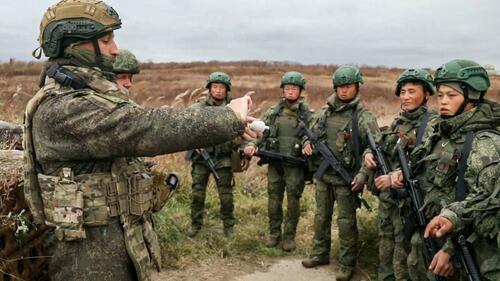 Via TASS
Via TASS
In the footage, Russian instructors teach the North Korean soldiers in shooting techniques and formations with Kalashnikov assault rifles. Anti-drone measures are also featured, as well as hand grenade training. Several live-fire exercises are featured, including firing RPGs and some sniper training.
Russia did not comment on precisely where the training took place, but it confirms that the terms of the Russian-North Korean mutual defense treaty - inked last summer between Presidents Putin and Kim Jong-Un, had been enacted fairly quickly once Ukraine forces crossed the border and entered Kursk.
The latest international reports have said 14,000 or more North Korean soldiers were sent to Russia amid the Kursk operation. The bulk of these are said to be from special forces units. Putin thanked them and Kim Jong-Un this week, in a first such public acknowledgement.
Ukraine is meanwhile urging Washington to take more serious action in light of this confirmation, and is also calling on South Korea, per regional media:
"If the Kremlin sends North Korean troops to the territory of Ukraine it would mean that North Korea is in a state of all out war with Ukraine," Oleksandr Merezhko, chair of the parliament's foreign affairs committee, told the Kyiv Independent.
The lawmaker from the ruling Servant of the People explained that such a deployment would cause "serious legal, political, and military consequences for Russia and North Korea," prompting a stronger reaction from countries such as South Korea and the U.S.
"(Russian President Vladimir) Putin understands that if he does it (U.S. President Donald) Trump will have to react rather strongly," Merezhko said.
Watch: video issued by Russian military showing training of DPRK troops at a prior date:
“We won’t invade Ukraine.”
— Shaun Pinner (@olddog100ua) April 28, 2025
“No North Koreans are fighting for Russia.”
“We want peace talks with Ukraine.”
How many times does the West need to hear Russia lie before it finally learns? pic.twitter.com/a8spASlnLlUkraine had reportedly breached the Russian border in Belgorod too, so it's possible North Korean troops might be deployed that region as well. Whether or not they are actually inside Eastern Ukraine is an open question.
As for North Korea's Kim, KCNA quoted him Monday as saying, "They who fought for justice are all heroes and representatives of the honor of the motherland." North Korea "regards it as an honor to have an alliance with such a powerful state as the Russian Federation," he added. Ukraine has claimed to have captured a handful of both North Korean and even Chinese troops over the past month.
-
Site: Mises InstituteThe state is not necessary for human development or governance. It is important that advocates of freedom and free markets publish scholarship that builds on this truly libertarian, or laissez-faire, view of the state. In this issue of The Misesian, Roberta Modugno does just that.
-
Site: Mises InstituteThe state, born at the dawn of the modern age for the needs of pacification, to protect people, has in reality become, as Rothbard writes in For a New Liberty, “the supreme, the eternal, the best organized aggressor against the persons and property of the mass of the public.”

